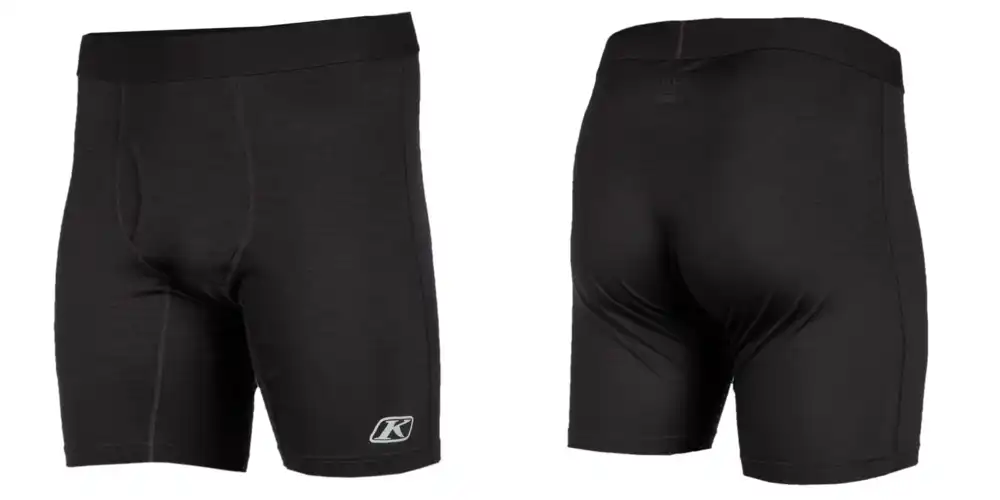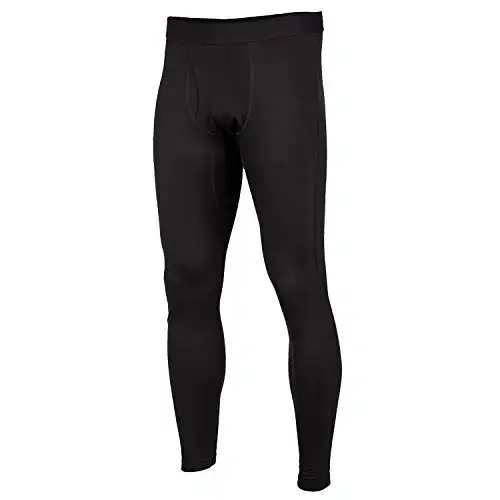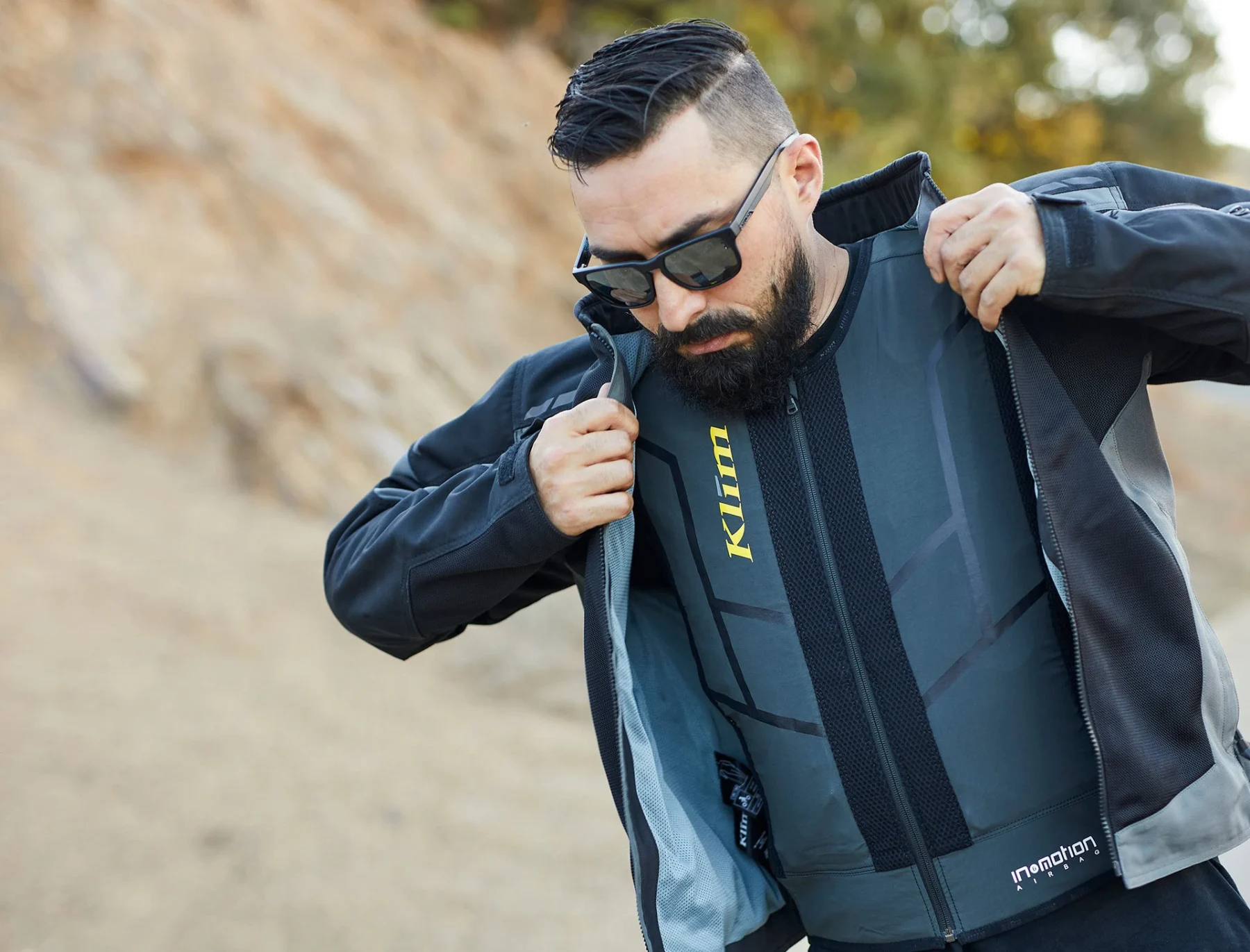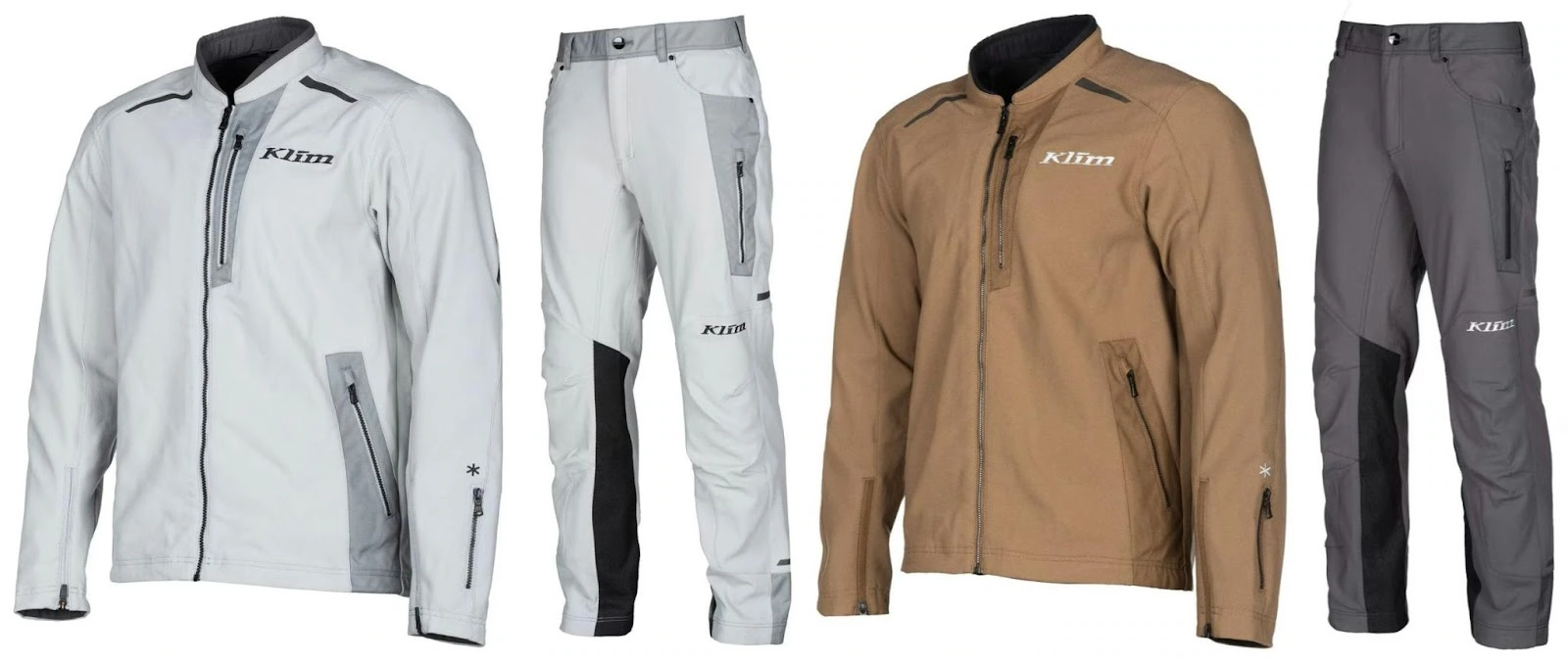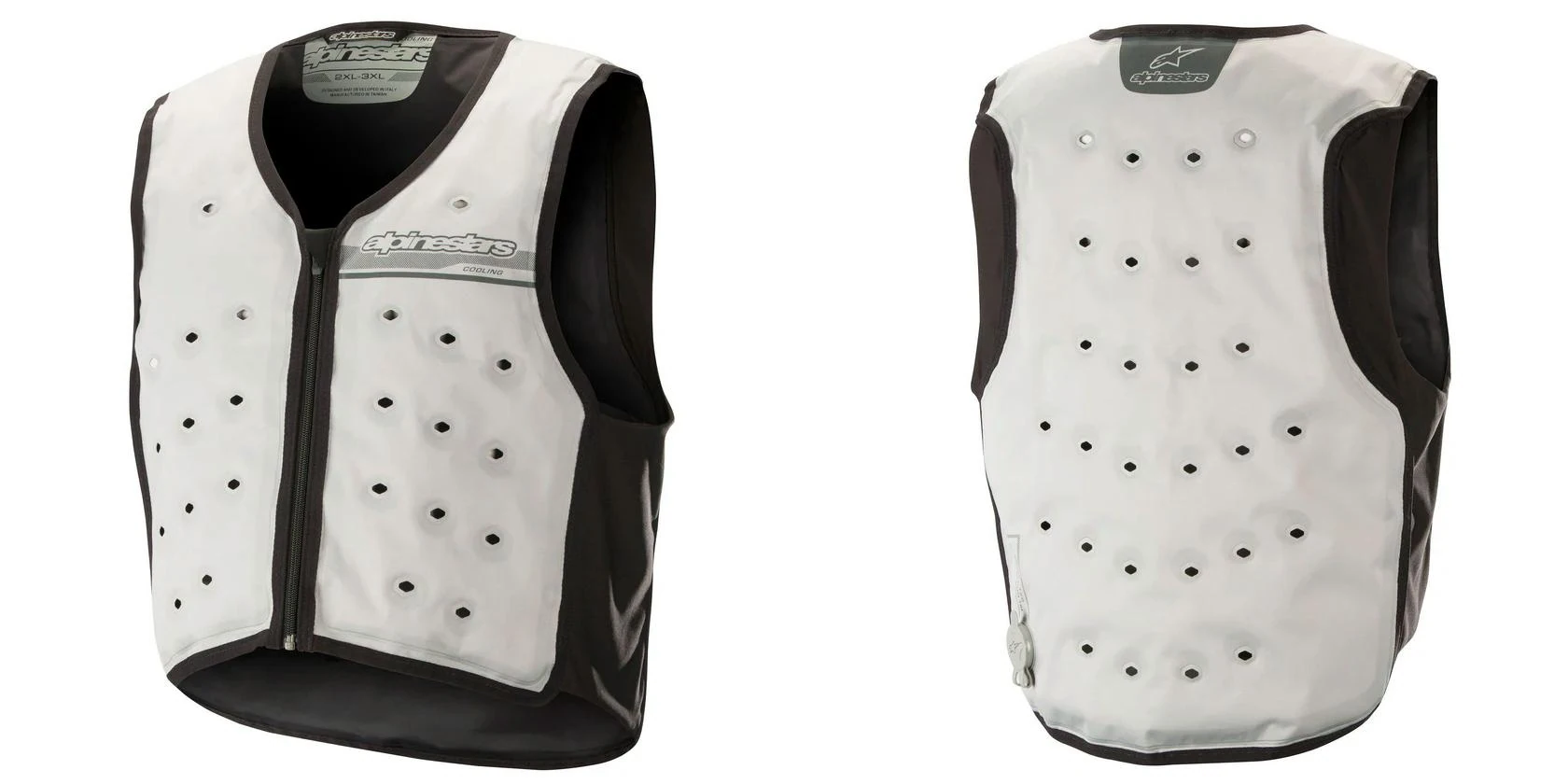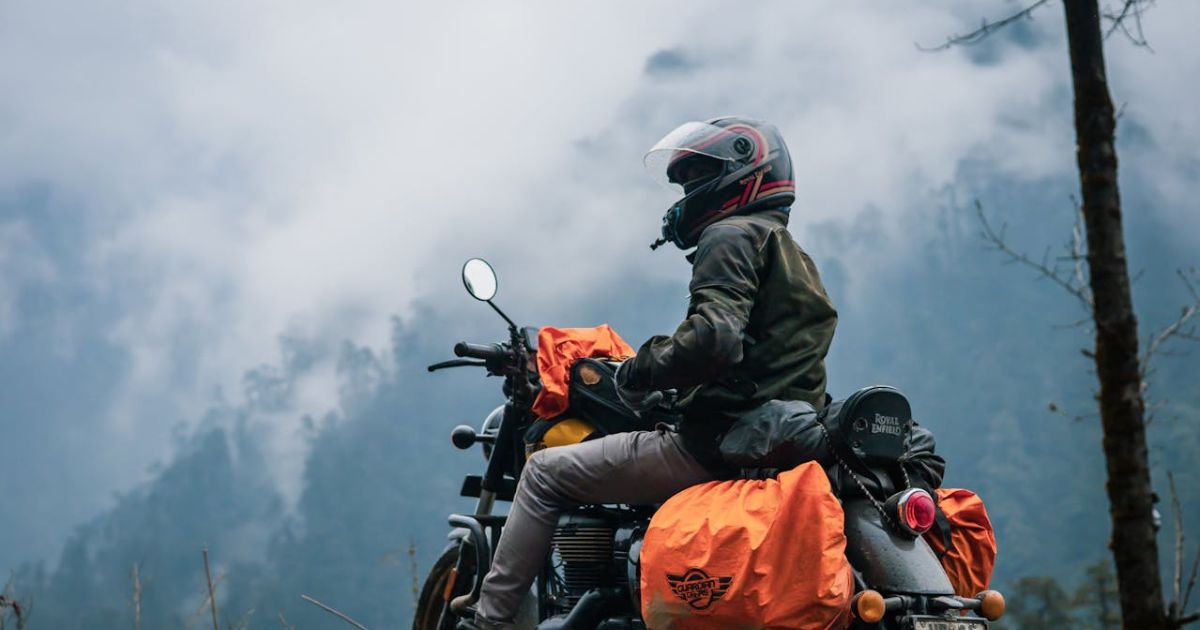
Mastering Motorcycle Gear: The Art and Science of Layering
left for contents
If you’re blessed to live in a place where it never gets cold, or you’re a fair-weather rider, the chances are you just wear a summer motorcycle jacket and motorcycle jeans. Or perhaps you ride in casual clothes supplemented with protective mesh undergarments like the CE AAA-rated Bowtex Elite Shirt and Leggings.
But if you live and ride in the real world where it does get cold, the kind of cold that freezes your nuts off (t*ts for the ladies), you’ll need a different outfit.
Add into the equation the windchill factor, which rises exponentially with the velocity indicated on your speedometer, and you’ll need to jazz up your riding combo with layers of warm clothing, including battery-powered heated layers.
But how often do you ride naked, only wearing boxers and a helmet when it’s hot? Rarely, right? Layering with vented or mesh gear shields your skin from the sun, keeping you cool and preventing the risk of skin cancer.
You may even need a cooling vest to control your body temperature when it’s stifling hot. Especially enduro/dual-sport/ADV riders are at risk of overheating when ‘technical’ off-road riding on gnarly terrain where physical exertion is high and speeds and hence airflow is low.
When it’s hot, you’re bound to see a squid (Stupidly Quick, Underdressed, and Imminently Dead) riding in shorts and a T-shirt, unintentionally volunteering to become an organ donor. Or at least involuntarily posing for social media photos of horrendous injuries after being tossed off the bike.
If you agree that scars and skin grafts look unsightly and fractured bones and crippled joints are rather inconvenient, your layering should include some decent—read: CE-certified—abrasion and impact protection.
The Gear section of this website contains articles and reviews discussing various styles of jackets, armor, and layers. In this article, I’ll take you on a tour of technical layers, what they entail, the ins and outs of the various materials, technicalities, and specs, and the resulting performance aspects. This will allow you to make an informed decision based on your requirements, preferences, and budget.
The first part of this article introduces you to The Art of Layering. If, after reading part one, you’re still thirsty for knowledge, I invite you to continue reading. The second part introduces you to The Science of Layering.
Given the importance of the topic for your safety, comfort, and enjoyment of what is most likely your passion, reading this informative piece will be time well spent. Grab your preferred beverage, lean back in a comfy chair, and follow along.
For the best base layers in the biz, check out Klim. I’ve reviewed a whole set here.
Part I: The Art of Layering
Understanding Technical Layers for Safety and Comfort
Riding a motorcycle isn’t just about hitting the open road and throwing all caution to the wind; on the contrary, it’s about being prepared for whatever the elements put on your path. Whether you’re tackling twisty mountain passes in the biting cold or riding through the sweltering summer heat, having the right gear can mean the difference between an enjoyable ride and a miserable one—or worse, an unsafe one.
Motorcycle gear is typically divided into three technical layers: base layers, mid-layers, and outer shells. Each layer has a specific function:
- Impact absorption
- Abrasion protection
- Thermal insulation
- Body temperature regulation
- Moisture-wicking/perspiration management
- Breathability
- Ventilation
- Cooling
When combined properly, the three layers work together synergistically, optimizing the performance of the layers in providing both safety and comfort in any weather condition.
Base Layers: Moisture-Wicking and Temperature Regulation
The base layer sits directly against your skin and serves two primary purposes: moisture management and temperature regulation. When dressed in motorcycle gear, perspiration is inevitable, especially in hot weather or due to physical exertion during enduro/dual-sport/ADV-riding.
A good technical base layer, typically made from synthetic performance fabrics or merino wool, is designed to wick sweat away from your body. This keeps you dry, which is crucial in both hot and cold environments.
In the summer, a moisture-wicking base layer helps to keep you cool by facilitating evaporation. In colder conditions, staying dry is equally important because wet clothing will rapidly suck heat away from your body, leaving you cold and uncomfortable. It can lead to hypothermia, which can turn lethal in extreme cases. (Hypothermia is a condition that occurs when your core body temperature drops below 95 °F or 35 °C).
Best Features of Base Layers:
- Moisture-wicking fabrics like polyester, nylon, or merino wool
- Quick-drying properties
- Lightweight
- Breathable
- Soft and cozy
- Often snug or form-fitting to reduce bulk under other layers
In colder conditions, thermal base layers (often referred to as “long johns”, “leggings” or “thermals”) help to retain heat while still wicking moisture, preventing you from getting clammy. So, your base layer isn’t just about keeping you dry—it’s the foundation for your entire body temperature control system.
Mid-Layers: Insulation for Warmth
The mid-layer’s job is all about insulation and trapping the warmth your body generates. Think of it as your personal vestimentary climate control system.
When riding in cold weather, you need a mid-layer that provides sufficient warmth without restricting movement. Materials like fleece, down, or synthetic insulations like Primaloft or Thinsulate are commonly used in mid-layers. These materials work by trapping warm air close to your body, creating a barrier against the cold.
A mid-layer can be anything from a fleece shirt to a Merino wool pullover or goosedown puffer jacket, or a combination thereof, depending on how cold it is. The beauty of the mid-layer is its adaptability, making it the most versatile layer of your layering system. On warmer days, you might skip it entirely, but in colder temperatures, it can be the difference between an enjoyable ride and freezing your t*ts off.
Click on the following links if you want to know more about Merino Wool, Goose-Down Puffer Jackets, and Synthetic Insulation.
Best Features of Mid-Layers:
- Versatility
- Thermal insulation (fleece, wool, down, synthetic insulation)
- Lightweight
- Compressible (important for storing when not in use)
- Breathability to allow perspiration to evaporate
- Can be used on its own (as casual clothing)
In colder conditions, you might choose a natural down or synthetic down jacket for its excellent warmth-to-weight ratio. In wet conditions, a synthetic mid-layer performs better since it retains its insulating properties even when damp, whereas down tends to lose its effectiveness when wet.
Outer Shell: Protection from Impact, Abrasion, and Weather
The outer layer, or shell, is your main line of defense against both the elements and the hazards of the road. Its primary functions are impact absorption and abrasion protection, as well as shielding you from inclement weather conditions.
Motorcycle jackets and pants often come with integrated armor to protect key areas like your elbows, shoulders, knees, and back in case of a crash.
Outer shells are typically made from durable materials like leather or high-performance textiles that offer varying degrees of abrasion resistance, weather protection, breathability, and ventilation.
Typical high-performance fabrics used in motorcycle gear are:
- Vectran (a brand name for a high-performance fabric made from an aromatic polyester multifilament spun from a liquid crystal polymer in a melt extrusion process. This process orients the molecules along the fiber axis, resulting in a high-tenacity fiber that is five times stronger than steel)
- SuperFabric (a brand name for an extremely abrasion-resistant, hi-tech fabric covered with a pattern of tiny, hard, ceramic guard plates on a nylon or polyester substrate).
- Cordura (a brand name for a durable synthetic fabric woven from high-tenacity air-jet textured nylon 6,6 filament yarns. Its high-tensile strength makes it resistant to abrasion, tears, and scuffs)
- Kevlar (a brand name for a type of lightweight, heat-resistant, high-tensile-strength aramid polymer fiber that is five times stronger than steel)
For adventure touring and off-road riding, many riders prefer textile gear, as it’s generally more versatile in different weather conditions.
Leather, while offering superior abrasion protection, is less comfortable in hot weather, even if it’s perforated or combined with vents for airflow. Leather is also not rainproof and takes a long time to dry.
Best Features of Outer Shells:
- Abrasion-resistant materials (leather or textile)
- CE-certified armor for impact protection
- Ventilation zippers or mesh panels for airflow on hot days
- Waterproof and windproof membranes (Gore-Tex or similar) to keep rain out
- Adjustable fit to accommodate layering
The outer shell plays a critical role in maintaining breathability while protecting you from the elements. Jackets and pants with zippered vents or mesh panels allow you to open up airflow on warmer days, while waterproof membranes help you stay dry when the skies open up.
Combining Layers for Optimal Comfort and Safety
To create the perfect riding system, the key is combining these layers in a way that suits the weather conditions. On a chilly morning ride, you might start with a moisture-wicking base layer to manage sweat, a fleece or insulated mid-layer for warmth, and then top it off with an abrasion-resistant jacket for protection against the wind and cold. As the day warms up, you can remove the mid-layer and open the vents in your outer shell to let air in, without sacrificing protection or safety.
For summer riding, the base layer remains essential for moisture-wicking, but your mid-layer might be unnecessary. A well-ventilated outer shell with armor and abrasion protection will keep you cool while still shielding you from the sun, wind, and any potential crashes.
In wet weather, you may rely more heavily on your outer shell’s waterproof capabilities, while a base layer continues to wick moisture away from your skin. A lightweight, water-resistant mid-layer can help to maintain body heat in cold, wet conditions.
Conclusion of Part I: The Power of Layering
By properly layering your gear, you create a flexible system that can adapt to any weather or riding condition. Each layer serves a specific function—whether it’s keeping you dry, warm, or protected from impacts—making sure that you stay comfortable and safe no matter what the road or trail throws at you. With a solid understanding of how these layers work together, you’ll be able to confidently tackle long-distance rides, unpredictable weather, and any adventure on two wheels. After all, motorcycling is about freedom, and the right gear makes that freedom more enjoyable and, most importantly, safer.
Now that you’re introduced to the Art of Layering, do you also want to understand the Science of Layering? If so, then keep on reading.
Part II: The Science of Layering
Do You Need Thermal Base and Mid-Layers?
You don’t need thermal layers if you only ride in the tropical heat. But if you live in a colder climate or plan a summer trip in the Alaska Range or Colorado Rockies, you’ll need some serious gear.
“There’s no such thing as bad weather, only unsuitable clothing.”
If you’re familiar with alpine microclimates, you know how fickle the weather can be at altitude. One moment you’re riding up a south-facing slope under sunny blue skies, but the minute you cross over the pass, the rain or fog on the north face is so dense you can barely see your front wheel, not to mention the drastic drop in temperature.
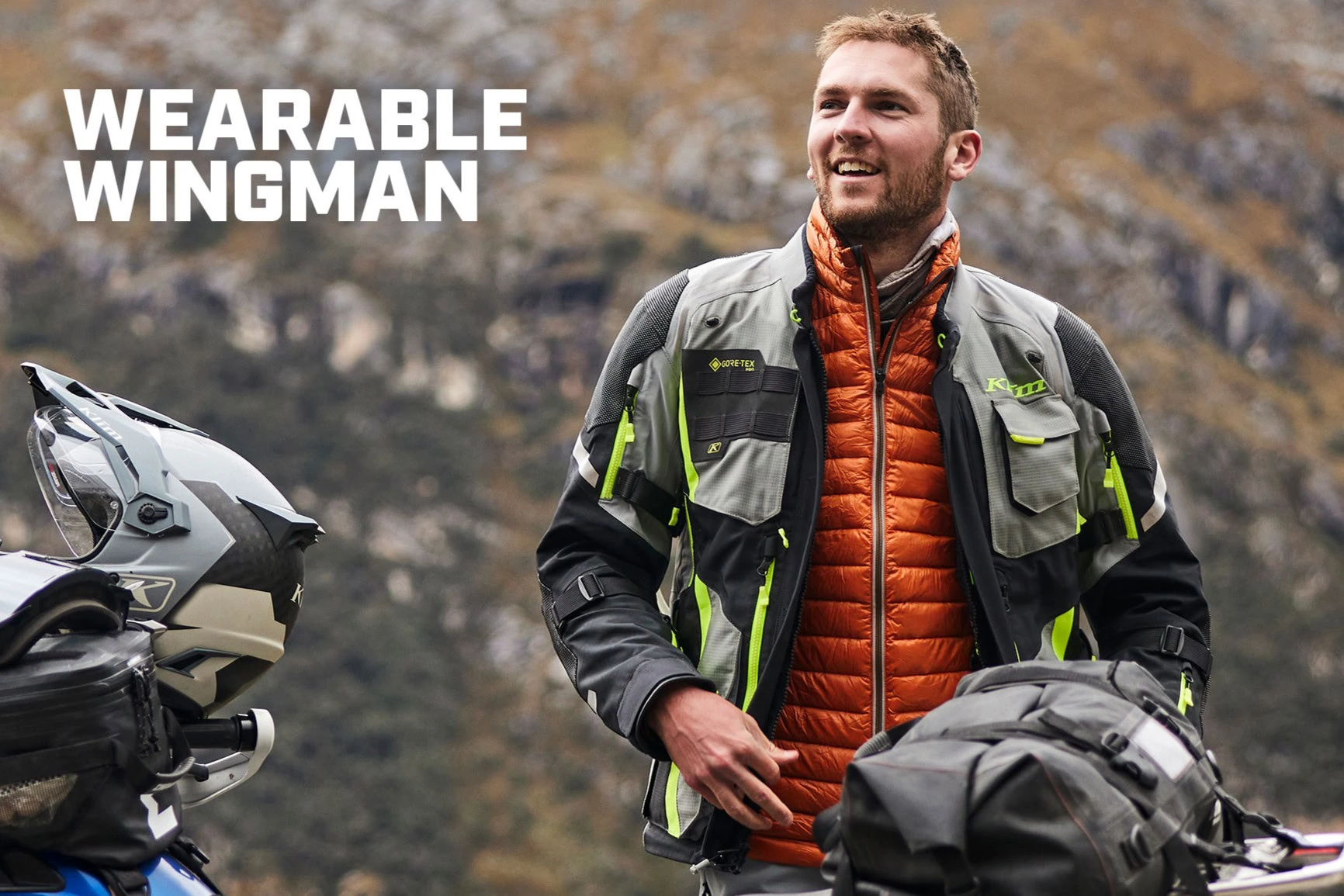
Donning protective motorcycle gear is vital in any scenario, but you can’t rely on the weather forecast to dictate your attire at high altitudes. Mountain ranges create an unpredictable microclimate, requiring you to come prepared with all-weather, four-season riding gear. Riding in the desert is equally challenging, as the temperatures can drop dramatically at night.
Like everything you buy, quality comes at a price. It’s no different with top-quality technical riding gear. But if you look at the purchase as an investment instead of a cost, it quickly makes sense. When you’re on that once-in-a-lifetime Himalayas tour, snug as a bug in your cozy Klim Maverick Down Jacket, the last thing you’ll be thinking is, “I wonder if I could have saved $100 by going for the Walmart jacket instead.” But if you’re freezing due to subpar insulation, you’ll most definitely wish you’d spent $100 more.
An investment pays dividends, and technical riding gear does too: it yields an ROI (return on investment) by keeping you warm, dry, and safe.
Over the years, my experience taught me that top-quality gear is worth more than its price tag. If you’ve ever been thoroughly soaked, chilled to the bone, and had your shriveled cojones resemble frozen popsicles after riding for hours in the rain, you’ll never forget the utterly miserable experience.

Having ample experience with both crappy attire and top-notch technical riding gear, I agree with Alfred Wainwright, the British author of walking guidebooks, who commented: “There’s no such thing as bad weather, only unsuitable clothing”. This credo may well underlie the design philosophy that guides the good folks at Klim HQ in Rigby, Idaho.
Why You Should Be Layering
Temperatures often swing widely between nippy in the morning, sweltering hot in the afternoon, and downright frigid at night. Layered up to face the frosty morning temperatures, you’ll have to peel off a layer or two when the sun rises during the day.
To be effective across a wide temperature range, your riding gear must be a multi-tiered system consisting of base, middle, and outer layers, offering flexibility and versatility.
Layering your clothing allows you to regulate your body temperature in response to changes in the weather and temperatures that affect your comfort and safety.
It’s important to stress that, beyond comfort, layering improves safety. Overheating or shivering with cold impacts your alertness and impairs your judgment, affecting your reaction time considerably.
Why Technical Garments are Better for Layering
Many motorcyclists typically spend most of their wardrobe budget on helmets, jackets, boots, gloves, and perhaps motorcycle jeans when they realize that regular jeans don’t offer protection.
When budgeting for riding apparel, you may overlook the underlying layers since they can be readily sourced from your ‘regular’ wardrobe. However, casual clothing performs not nearly as well as technical apparel specifically designed for motorcycling or snowmobiling.

Up in the mountains, at high altitude, the weather is about as predictable as a cat on catnip—better be ready for anything. Half a century of riding has taught me that skimping on gear is like asking for trouble. It’s not just about comfort; it’s about survival. This notion was rubbed in my face the hard way. Let me elaborate, as there are lessons to be drawn from my experience.
A Cautionary Tale
Once upon a time, I got stuck in a blizzard after a front tire blow-out on Chang La Pass, at 17,590 ft one of the highest passes of the Himalayas in Ladakh, India. While removing my front wheel, low-drifting dark clouds appeared menacingly over the pass. Moments later, howling wind and squalls of driving snow forced me to halt working on the bike.
Seeking shelter from the raging blizzard, I hunkered down behind the bike and wrapped myself in an aluminum foil survival blanket my son had put in my emergency kit. At the time, I laughed at his initiative, telling him I had zero intention of getting myself into life-threatening trouble.
I realized I couldn’t have been more wrong, as I huddled next to my bike, shivering like a chihuahuha on crack. The reason I was trembling from hypothermia was that my cotton t-shirt acting as the base layer was soaked with sweat from lifting the bike onto a rock and removing the front wheel. At over 17,000 ft, the air was so thin (low on oxygen) that this task required enormous effort, leaving me sweaty and breathless. If it weren’t for the survival blanket, I might’ve succumbed to hypothermia due to the wet cotton base layer sucking the warmth out of my body.
Why Cotton Kills
Although breathable, non-itchy, and soft, cotton is the worst-performing fabric for cold-weather gear. It’s terrible at moisture-wicking, it’s not odor-resistant, and extremely slow-drying. Because cotton is hydrophilic (water-loving), it absorbs and retains an enormous amount of water compared to its weight, the last thing you want when you’re exposed to the cold.
Continue reading if you’d like to know more about cotton’s evil character. If not, skip to here.
The Science Underlying Murderous Cotton
Our body warms the air held captive in and between the cotton fibers, insulating us from the cold. Cotton fibers are tiny hollow tubes, AKA capillaries. Through a process called capillary action*, these microtubes suck up moisture like a straw does with liquid, displacing the air trapped inside the fibers when they’re dry. Cotton clothing touching your skin absorbs your sweat like a sponge, losing its insulating capacity when the hollow fibers become waterlogged.
*Capillary action is the propensity of a liquid to flow through narrow spaces without regard to external forces like gravity. It depends on a complex process of interactive forces like osmotic pressure, the liquid’s surface tension, the solid material’s surface energy, and the molecular bonds’ strength between them.
Without any air trapped between and inside the hollow fibers, the lack of insulation will cause you to feel cold. Even worse, your body heat will dissipate through convection from the wet base layer to the outside layers.
Its strong capillary property makes cotton absorb up to 27 times its weight in water. This explains why cotton garments feel very heavy when soaked and why they pull body heat away at an alarming rate. The greater the cold liquid mass in contact with your skin, the faster you lose body heat through outward convection.
We easily underestimate how dangerous wet cotton clothing can be. Generally, you lose about 2% of your body heat to convection. However, when your skin is covered with wet cotton clothing, your body loses 10%–15% of its heat. Add heat loss from evaporation and you see why hypothermia can occur even at 60℉/15℃.

Wet cotton dries very slowly as it holds onto water due to the strong capillary action. Your body loses heat rapidly if you don’t change out of your wet cotton clothes. Without insulation, your body can’t maintain its core temperature when exposed to the cold.
The excessive heat loss and resulting drop in body temperature can lead to disorientation, hypothermia, and potentially death. It’s a common misconception that hypothermia only happens in freezing weather. The risk of hypothermia also exists in temperatures well above freezing, especially if your body is exposed to wind. Hypothermia occurs when your body loses heat faster than it can produce heat, causing your body temperature to drop to dangerously low levels.
With the lesson learned from the Himalayan survival experience, I upgraded my wardrobe to deal with extreme temperatures from desert to Arctic conditions. In the following years, I put my technical layering wardrobe to the test in extreme conditions more times than I’d like to admit.
Unintentionally, I found myself riding again in a blizzard in the Alvord Desert in S.E. Oregon, freezing fog at night on a mountain pass in the French-Spanish Pyrenees, and mid-winter in the Himalayas in the northwest of Vietnam. These journeys started under sunny skies, but each time I ran into freezing weather, testing my layered gear to the limit. I’m glad to say the Klim technical base and mid-layers saved my bacon.
A Short Digression on Synthetic Layers
By contrast, quick-drying synthetics used for activewear barely hold water. They are popular for sports as they excel at wicking moisture away from the skin and keeping your body temperature stable.
Synthetic fibers such as polyester are virtually non-porous and hydrophobic (water-hating). Polyester absorbs little or no water, but it adsorbs it quite well (find out about the difference in the next section).
Once the fibers are spun and woven, capillary action drives moisture to the surface. Synthetic fabrics developed for performance wear are made of tiny fibers aimed at controlling the moisture-wicking properties of the finished fabric.
Click here to read more about synthetic insulation materials used in motorcycle gear.
Understanding Moisture Wicking: Adsorption vs Absorption
Following is a short scientific explanation of how moisture wicking in fabrics works.
Absorption occurs when a substance permeates another, for example, when a sponge soaks up water. Absorbent materials have plenty of internal storage capacity to soak up and retain water.
Adsorption is a lesser-known physical phenomenon, but it’s essential to understanding how moisture-wicking works. When a substance, usually a liquid or gas, is spread evenly over the surface of another, usually a solid – we refer to it as adsorption. Adsorption keeps water sticking to a surface without penetrating it. It’s easy to remember the meaning of adsorption if you think of the words ‘adhesion’ or ‘adhesive’, i.e., sticking to the surface.
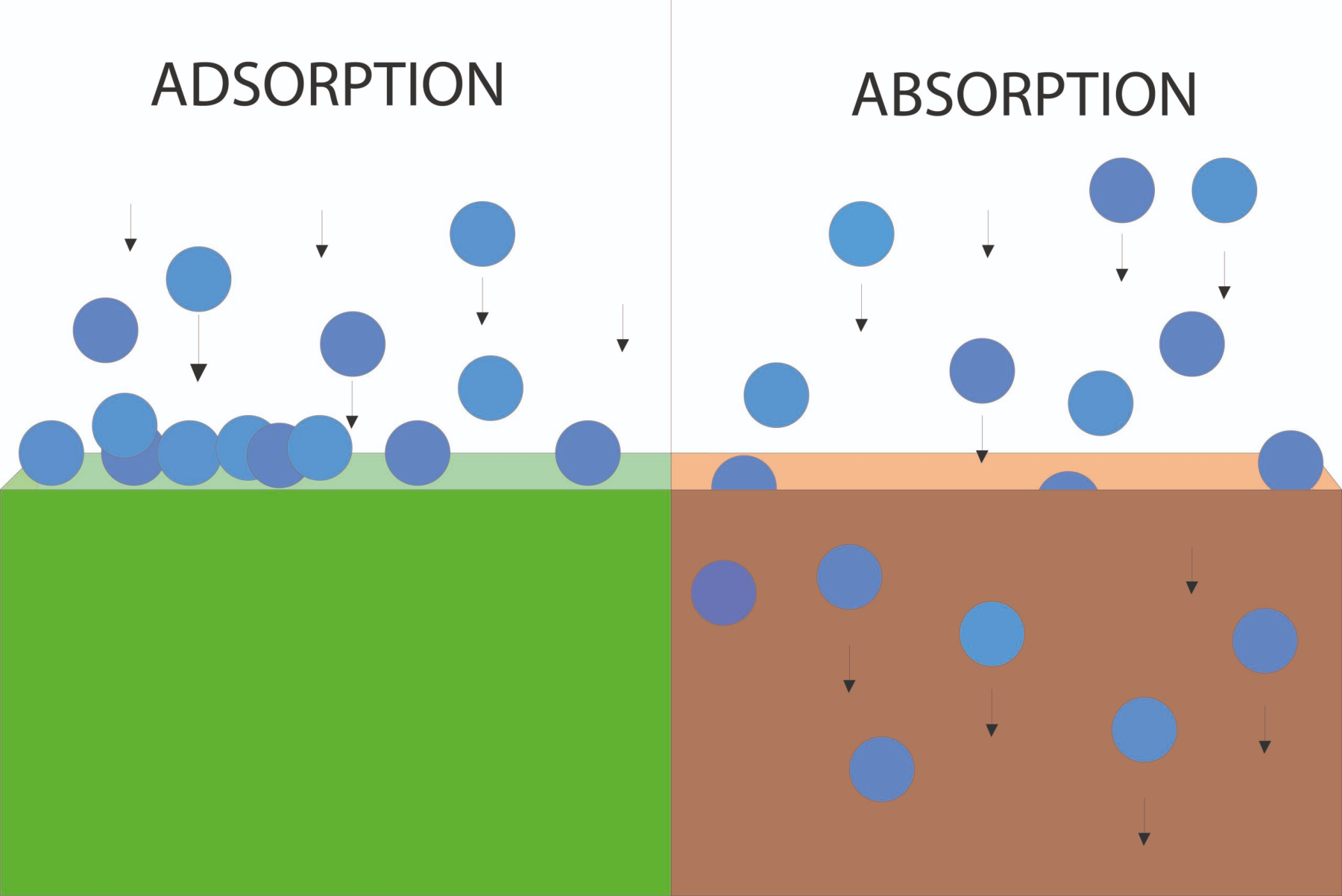
Moisture wicking is about keeping water moving. If a fiber easily absorbs water, it can’t transport that moisture effectively since it’s trapped in the fiber. Think of cotton’s great capacity to absorb and retain water. There’s no fast-acting force to extract the water from the cotton fibers and pull it to the fabric’s surface, and thus the garment remains wet. Evaporative cooling happens while moisture is still in contact with your skin, extracting your body heat.
The importance of moisture wicking is to quickly transport sweat away from your skin before it evaporates and causes excessive body heat loss.
Technical Layers: Protection, Insulation, Ventilation, and Breathability
Layering with quality technical riding gear will always outperform layering with casual clothes by a large margin. Designed to act synergistically and enhance their joint performance, the base and mid-layers combine with the outer shell, forming an integrated system that optimizes protection, insulation, ventilation, and breathability. Let’s look at these functions in detail.
Protection
Protection is traditionally the role of the first line of defense, the outer shell, which is fitted with impact-absorption padding and abrasion-resistant fabrics or leather at the impact-prone zones.
But that’s not always the case anymore. In recent years, advances in gear design, materials science, and production technology have led to the emergence of technical base and mid-layers that offer highly effective impact and abrasion protection. Let’s have a look at what is available.
Body Armor
If you’re an enduro or dual-sport rider, you probably prefer to wear separate body armor under a motocross jersey or a light enduro jacket, depending on the weather. Body armor comes in several forms:
Chest Protector
The body armor popular with motocross racers is the hard-shell chest/back-protectors, AKA “roost guards”, covering the thoracic area to protect the spine, chest, and ribs. Shoulder and elbow protection pads may or may not be attached to the chest/back protector. The physical intensity of motocross racing requires an“open” chassis that offers plenty of ventilation without compromising protection and safety.

Body Protection Jacket
Body Protection Jackets, AKA Pressure Suits, have become “standard issue” in the off-road community. Rally racers and enduro/dual-sport riders rely on these jackets for protection in the event of a get-off, which happens regularly. These tight-fitting jackets feature open-spaced mesh fabric and hard plastic protection pads on impact-prone zones.
These pressure suits have also become popular with ADV riders and RTW travelers, especially when riding offroad when it’s hot. Throw a puffer jacket and wind/rainproof shell over a body protector when it’s raining and cold, and you’re good to go.
Pressure suits have been my go-to protective gear for the past twenty years when riding my enduro and dual-sport bikes. For long-distance off-road adventures, I often combine a pressure suit with the Klim base and mid-layers under my riding jacket and pants, depending on the terrain and expected weather.
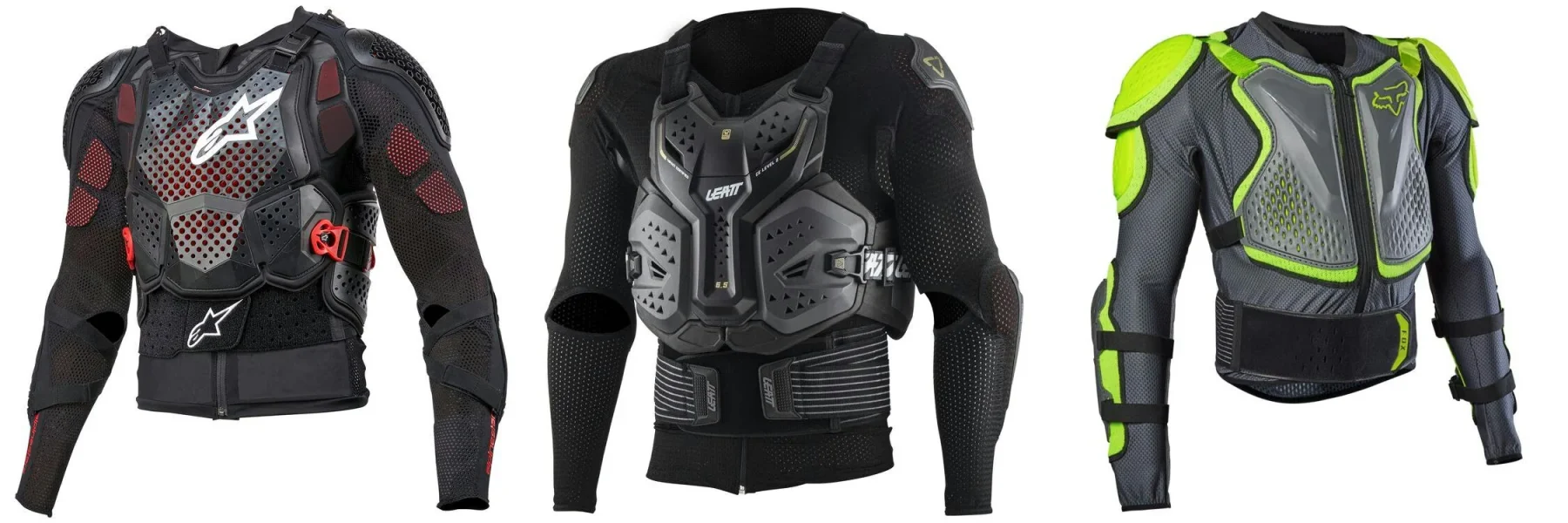
CE AA/AAA-rated Protective Base/Mid-Layers
Alternatively, technical riding gear brands offer a growing assortment of protective base and mid-layers with integrated impact and abrasion protection. Thanks to innovative material technologies, these base/mid-layers allow you to ride in your own style of casual clothes without giving up protection.
This gear trend is becoming increasingly popular with street riders and urban weekend warriors whose fashion sense requires donning attire that match the style of the café racers, scramblers, and retro-style bikes they ride.
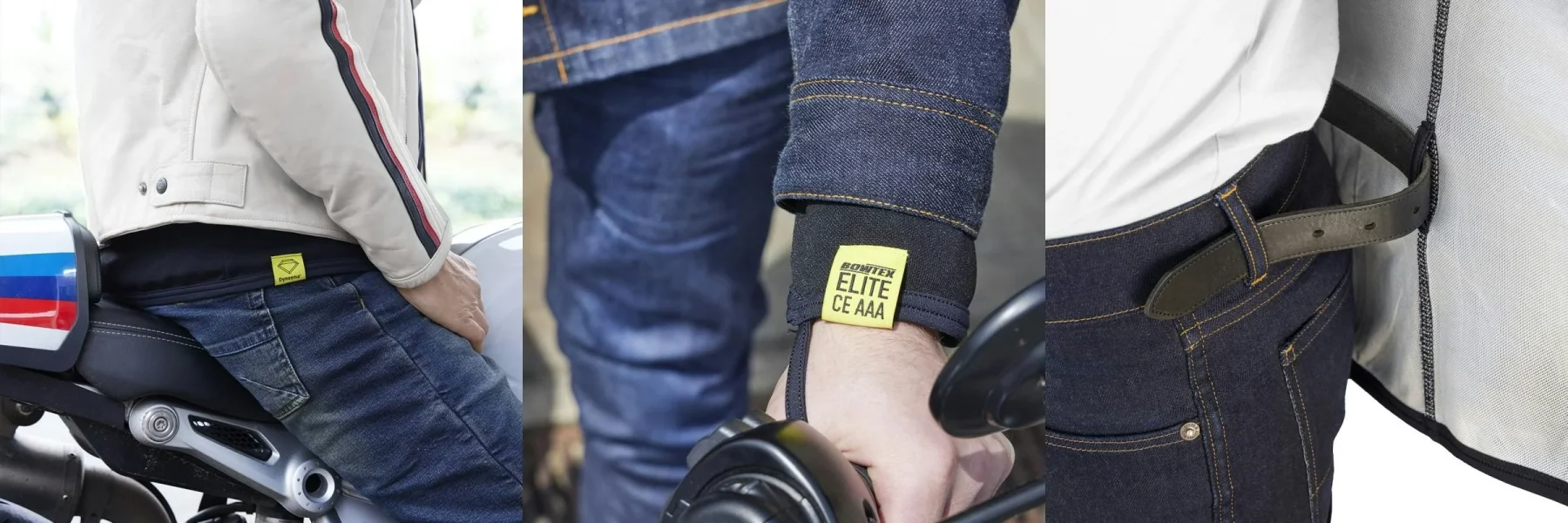
The CE AAA-rated protective mesh base layers like the BOWTEX Elite Shirt and Leggings are prime examples of this growing trend of protective base and mid-layers, made possible by recent advances in high-tech fabric and PPE technology.
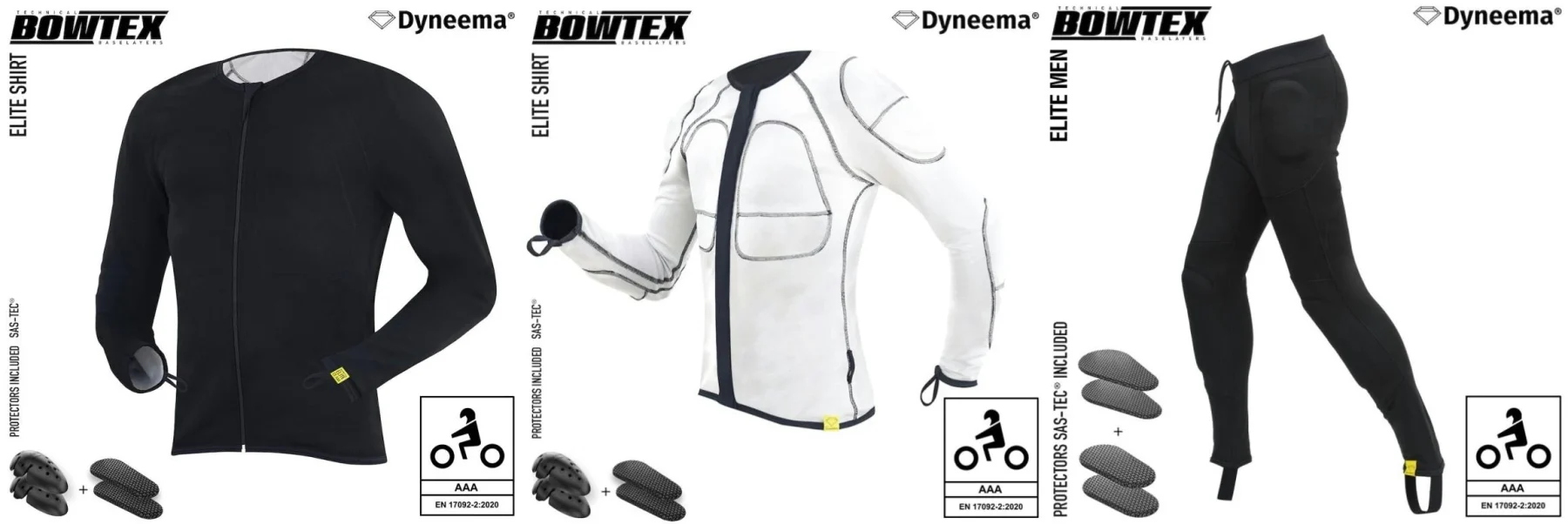
For a year and a half, I’ve been wearing a Bowtex shirt and leggings as standalone riding gear when it’s hot, and under my casual clothes when it’s colder, and it’s safe to say I’m a convert. Wearing the Bowtex mesh gear as undergarments allows me to show up for a business meeting or a lunch with friends without anyone even realizing I rode my motorcycle to the rendez-vous.
The Dyneema fabric used by Bowtex feels soft and pleasant on the skin and flows air exceptionally well. If you care about your safety on the road and in city traffic, Bowtex gear is a wise investment. At least, if you prefer to look like you, instead of like a Power Ranger when you get to your destination.
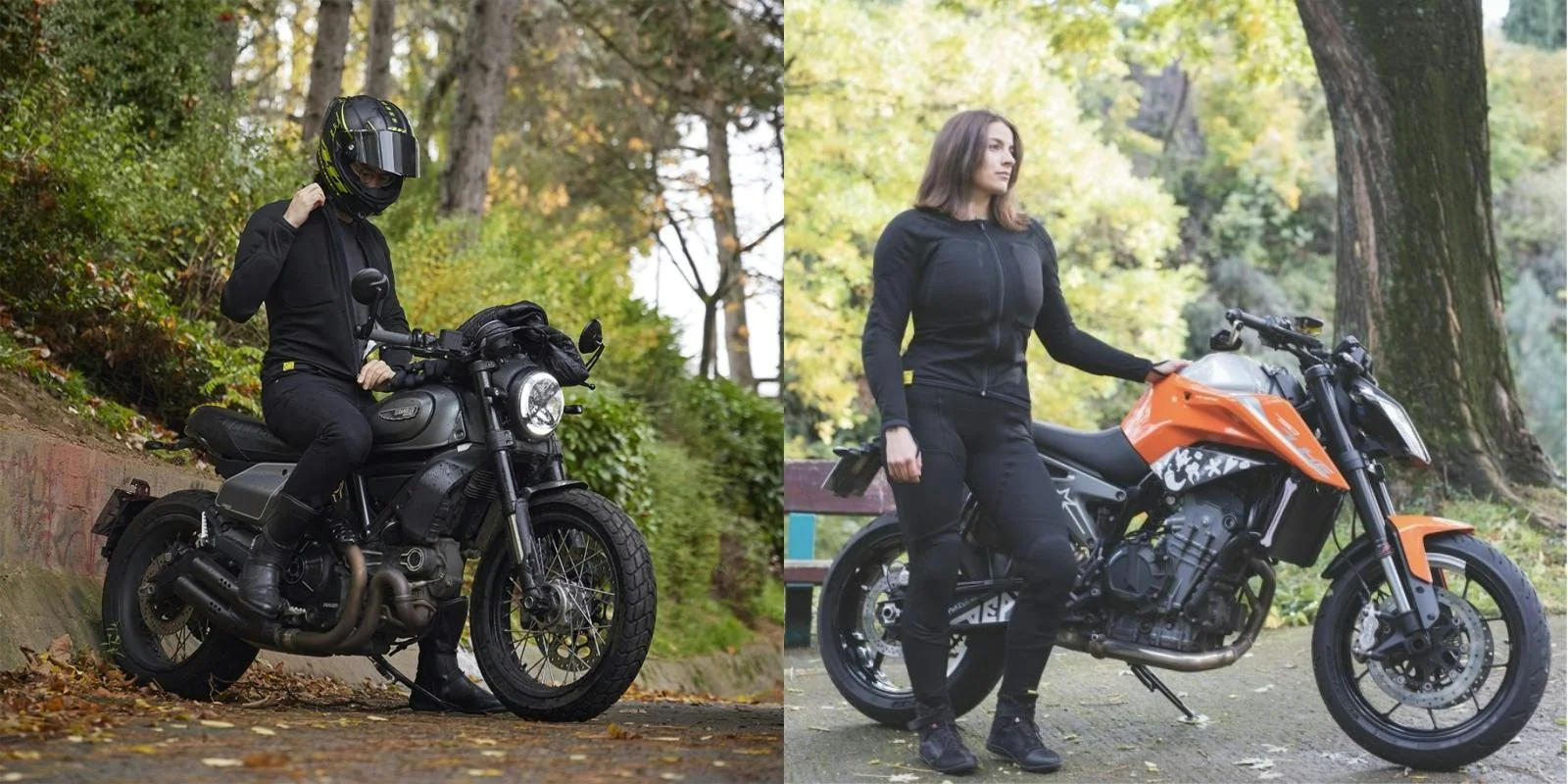
Impact-Protection Base Layers
Klim offers another option for protecting your body and limbs from painful impacts: The compression Klim Tactical Shirt, Shorts, and Pants. These protective next-to-skin base layers fit perfectly under any mid-layer and outer shell.
Klim’s Tactical riding gear product line is equipped with Perforated XRD® Extreme Impact Protection articulated padding in all the high-impact zones.

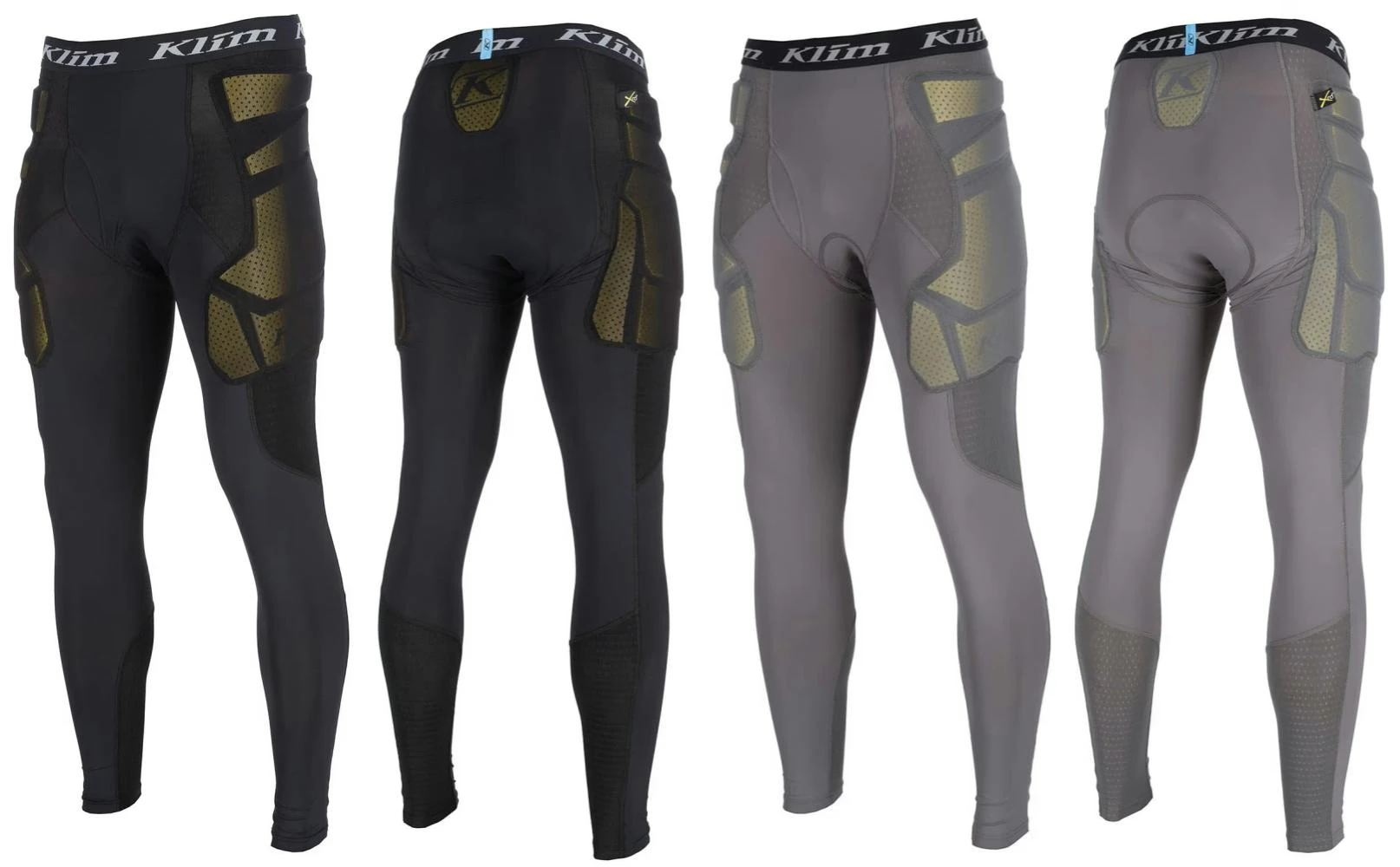
But even on my ADV journeys, I like to wear the Klim Tactical Shorts as additional protection for my hips, thighs, and tailbone under my Klim Badlands Pro A3 Pants, already equipped with excellent D3O impact protection pads. Perhaps it’s overkill, but you can never have too much protection when you go down. Trust me, I’ve learned it the hard way.
When embarking on a dual-sport ride in cold wet weather, my layering system combines the Klim Teton Merino Wool Gear and Klim Tactical Gear with my Gore-Tex Klim Traverse Jacket and Pants.
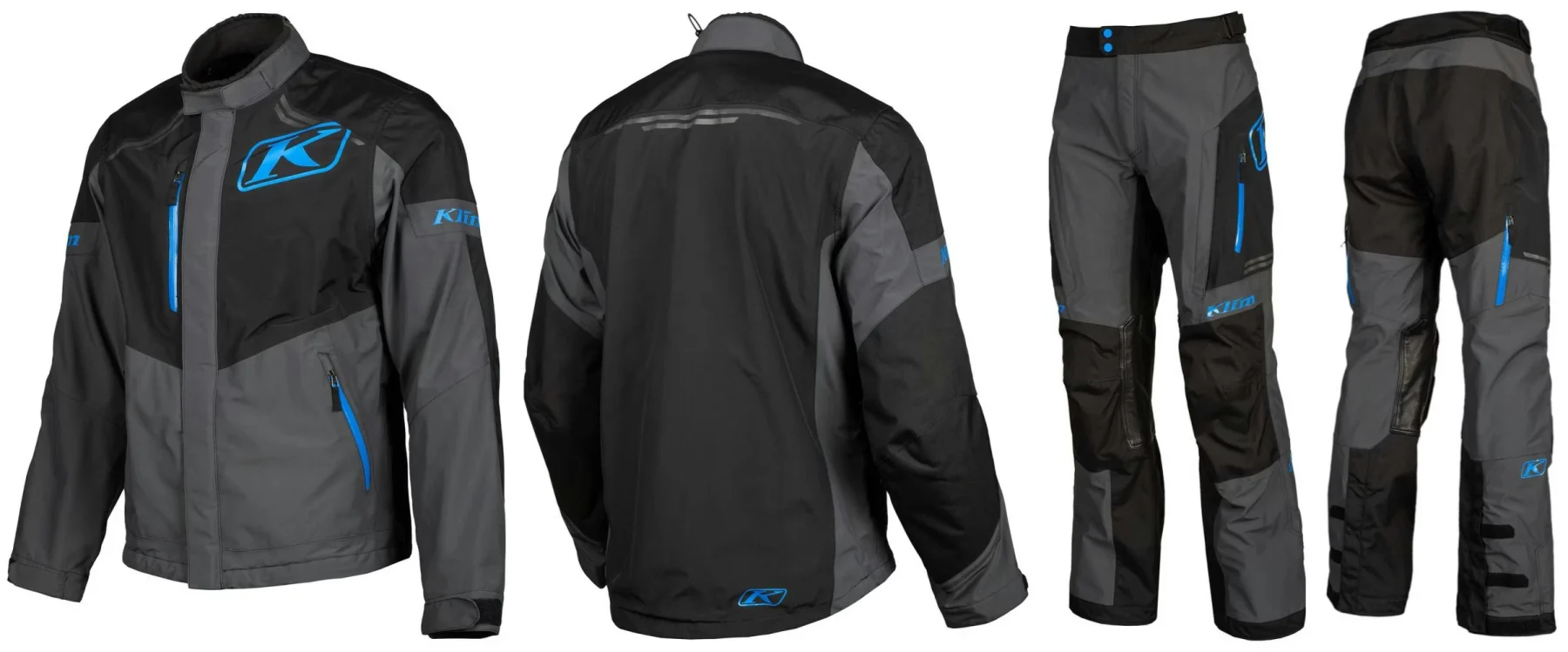
If you’re riding in the desert or during summer, the highly-ventilated mesh Klim Baja S4 combo is a good outer shell to combine with your base and mid-layers when the temperatures drop.
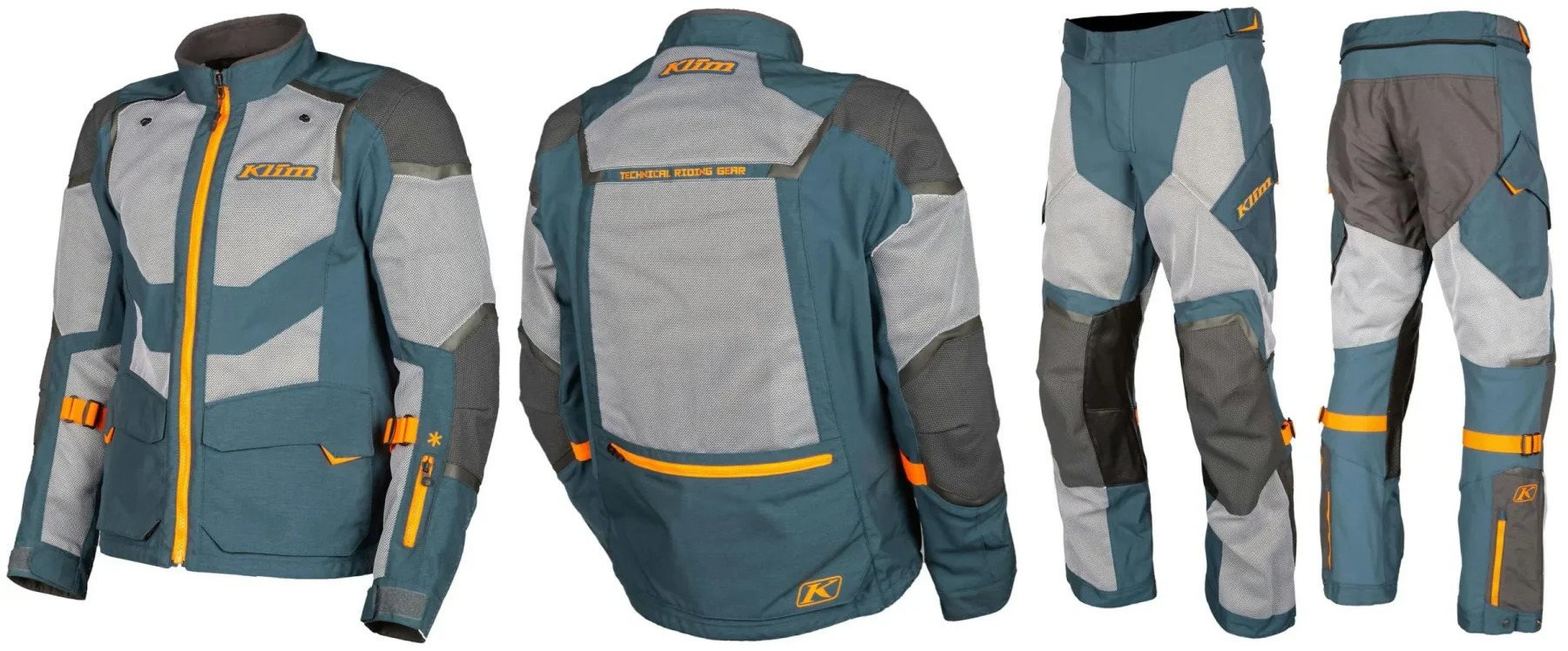
The reason I like wearing Klim’s highly breathable, moisture-wicking, Tactical base layers is that their compression function supports your body, reduces muscle fatigue, and enhances your comfort, making long rides more enjoyable. If it’s cold, I wear Klim Teton Merino Wool Boxers or Pants under my compression Klim Tactical Shorts or Pants. It works a treat.
Airbag Vests
Unless you’ve been living under a rock, you’re no doubt aware that there’s a new kid in town who is rapidly inflating his wealth through the protection racketeering business: The Airbag Vest.
As the world’s leading “Layering Company”, Klim offers the Ai-1 Airbag Vest, and its desert-racing twin, the Klim Ai-1 Rally Airbag Vest. This protective vest can transform itself from a slim silhouette to a bulging fatso in the blink of an eye.
Klim’s high-tech airbag vest offers the ultimate protection. The inflation is electronically controlled by a microprocessor receiving signals from crash detection sensors that are processed through algorithms driven by artificial intelligence (AI).
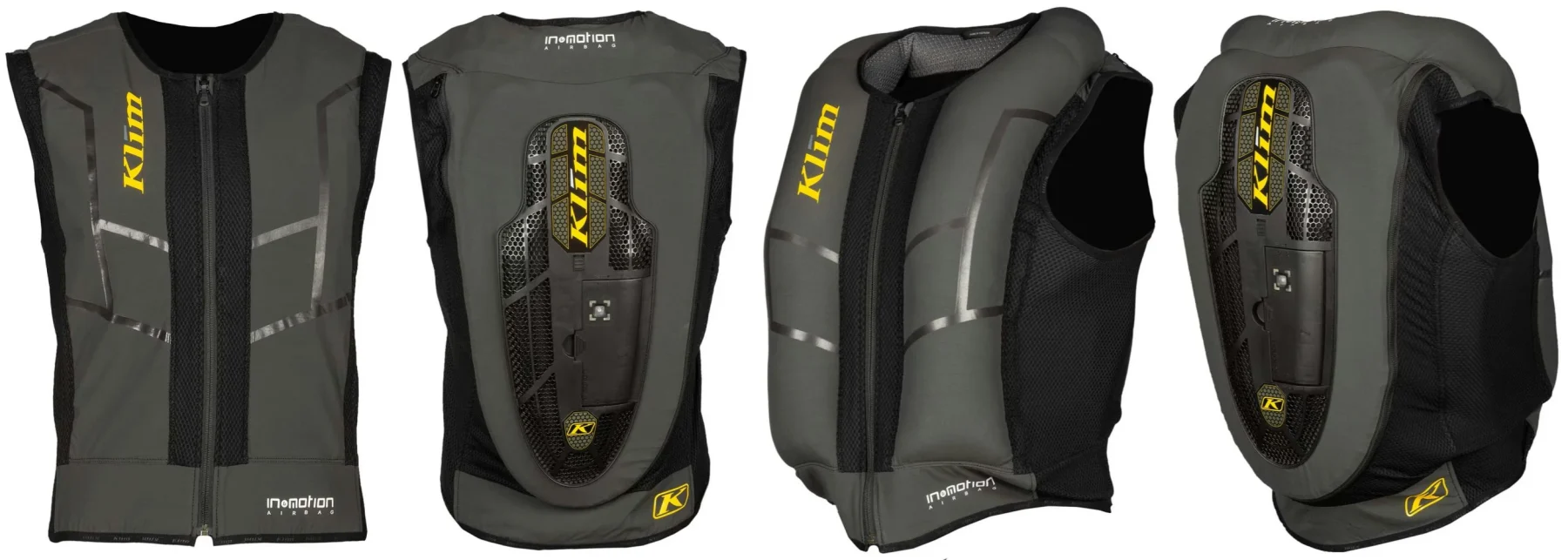
Although I have no intention of falling off a motorcycle for the sake of testing the efficacy of an airbag vest, I’m convinced that airbag technology is the new gold standard in PPE for motorcyclists. With a price tag similar to a decent helmet, you have no excuse for not safeguarding yourself from bodily harm with an airbag vest.
If highly-paid MotoGP racers bet their lives and fast-paced million-dollar careers on this AI-driven smart technology, then it’s good enough for me. The Klim Ai-1 Airbag Vest must be popular, because it’s often out of stock. But I hope to have one soon for review. Stay tuned!
Ventilation
Ventilation is critical for avoiding overheating when riding in hot weather. It’s primarily a function of the outer shell, the first and often only windproof barrier, and the gatekeeper for ventilation.
The base and mid-layers also play an important role in ventilation. The design, quality, compatibility, and choice of layer materials and vents determine how effective the ventilation of the entire layering system is.
A layering system consisting of base and mid-layers designed to be used jointly in a modular fashion performs better, exemplified by Klim’s collection of technical layers.
There are three approaches to beating the heat with ventilated technical layers, using mesh fabrics and vents.
- The first method, consisting of protective mesh jackets and pants, offers the most effective ventilation. For example, no mesh outer shell that protects against impact and abrasion lets more air through than the CE AA-rated Klim Marrakesh or Klim Baja S4.
- The second method consists of mesh base/mid-layers that offer the highest level of impact and abrasion protection like the CE AAA-rated Bowtex Elite Shirt and Elite Leggings discussed earlier.
The advantage of these über-protective base/mid-layers made from Dyneema is that they allow you to ride in your own (casual) dress style (are you listening, vintage/scrambler/cafe racer owners?) without giving up protection.
Although intended as base and mid-layers, riders increasingly wear the Bowtex apparel as outer shells when it’s hot, including myself and Evan, the publisher of this website, and Sarah Lezito, the world’s best female stunt rider.
- The third method consists of conventional outer shells ventilating via opening the main zipper, the zippered vents, and mesh panels on the jacket and pants. These all act as the controls of your vestimentary “air conditioning”.
The vents’ design, number, size, and configuration on the garment determine how well the outer shells ventilate. With 12 vents in the jacket and 6 in the pants, the Klim Badlands Pro A3 is the best-ventilated, 4-season, all-weather ADV suit on the market.
Breathability and Moisture-Wicking
Compared to casual clothing, technical base layers are more effective in keeping you comfortable and dry through their engineered breathability, moisture-wicking properties, and choice of materials.
By letting air through and wicking away perspiration from your skin, the layers shed heat through convection and evaporation. This is important when riding in hot weather, as you might be tempted to shed the outer layer or wear a light, less protective shell in an attempt to stay cool.
Insulation
The advantage of technical garments becomes apparent when temperatures drop: The thermal insulation properties of technical layers do not suppress breathability when ventilation is closed off to prevent you from getting cold.
To be effective, insulation has to have a level of breathability and moisture-wicking properties. Without these properties, your perspiration can’t evaporate and your clothes will get clammy and you’ll start feeling cold.
Opening or closing vents and adding or peeling off base layers and mid-layers is the most effective way to regulate your body temperature.
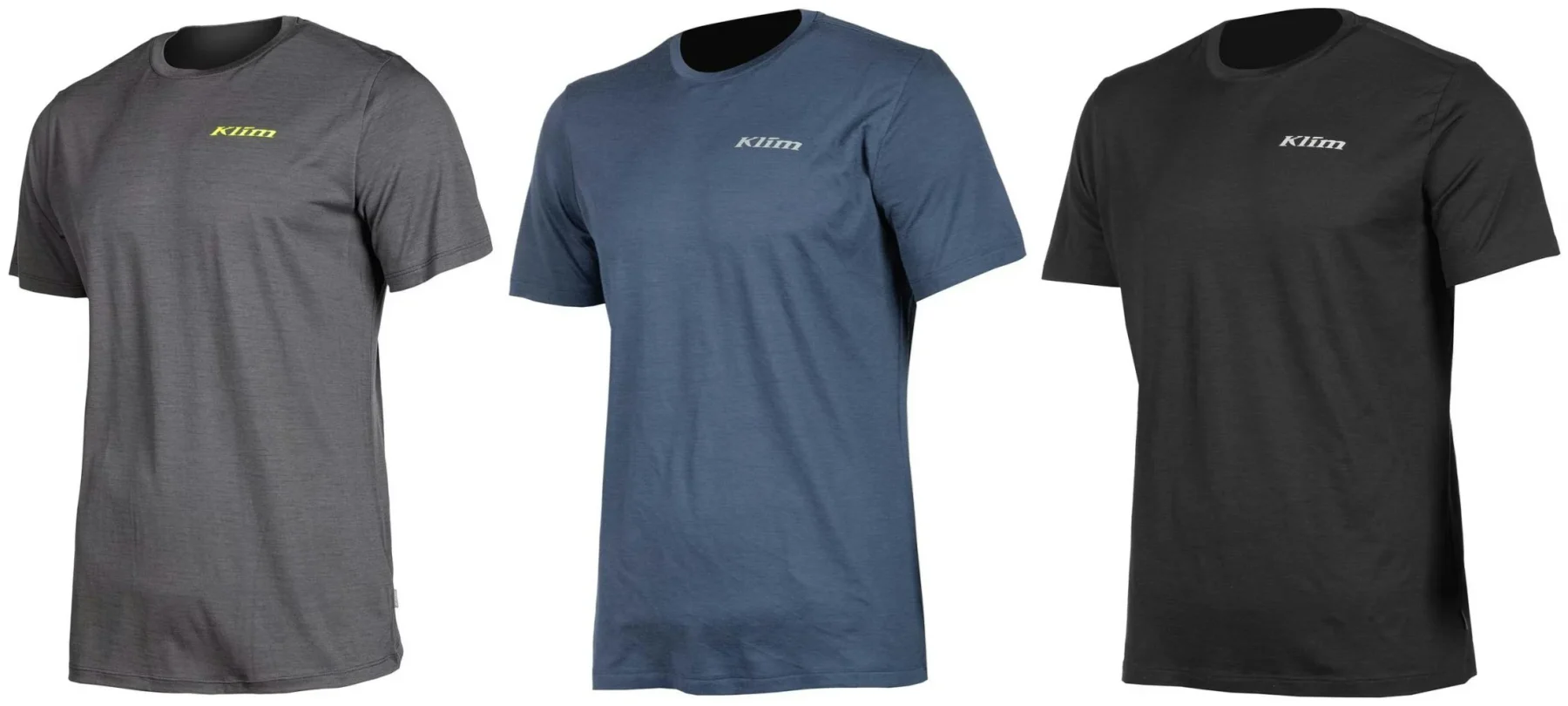

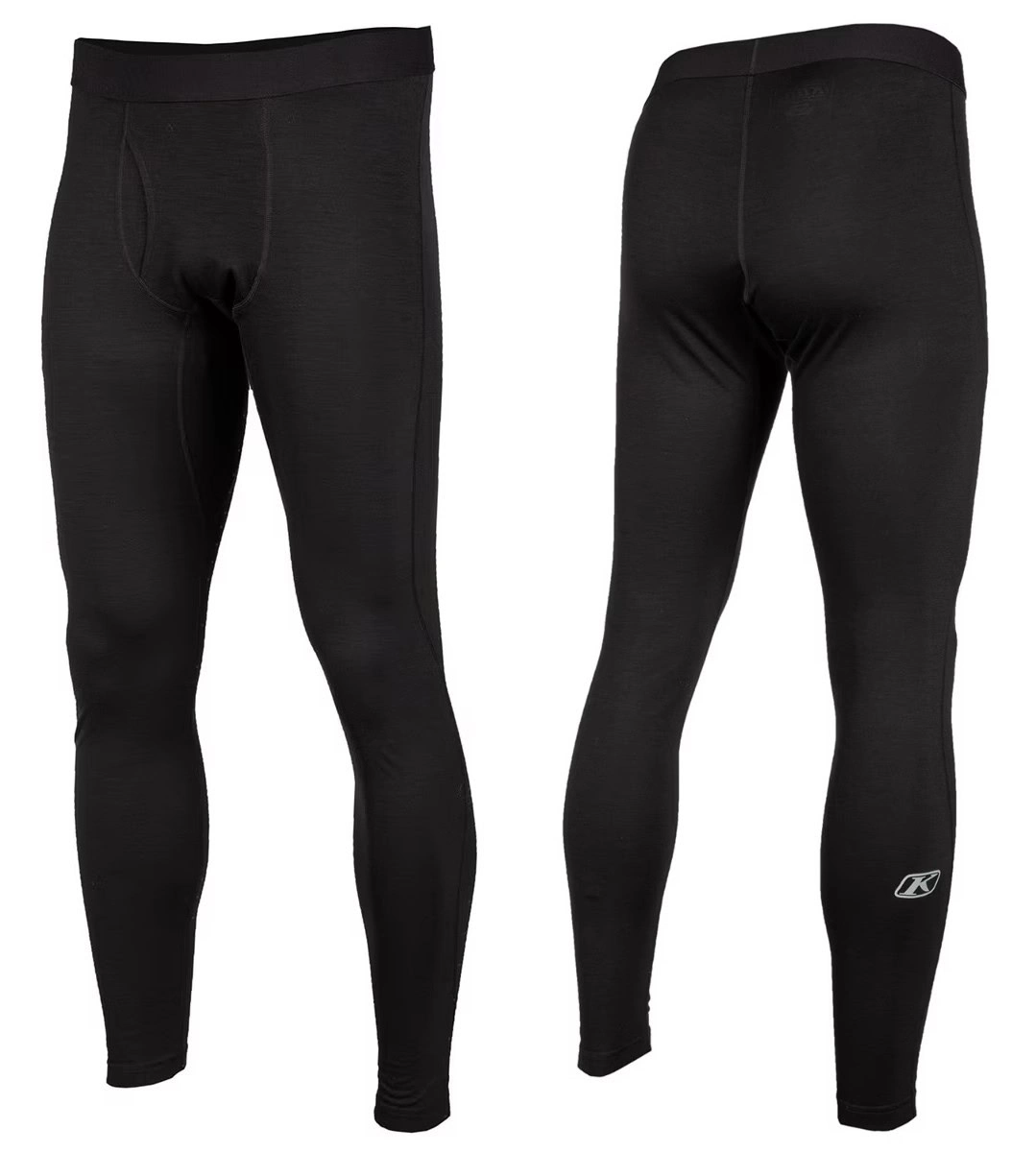
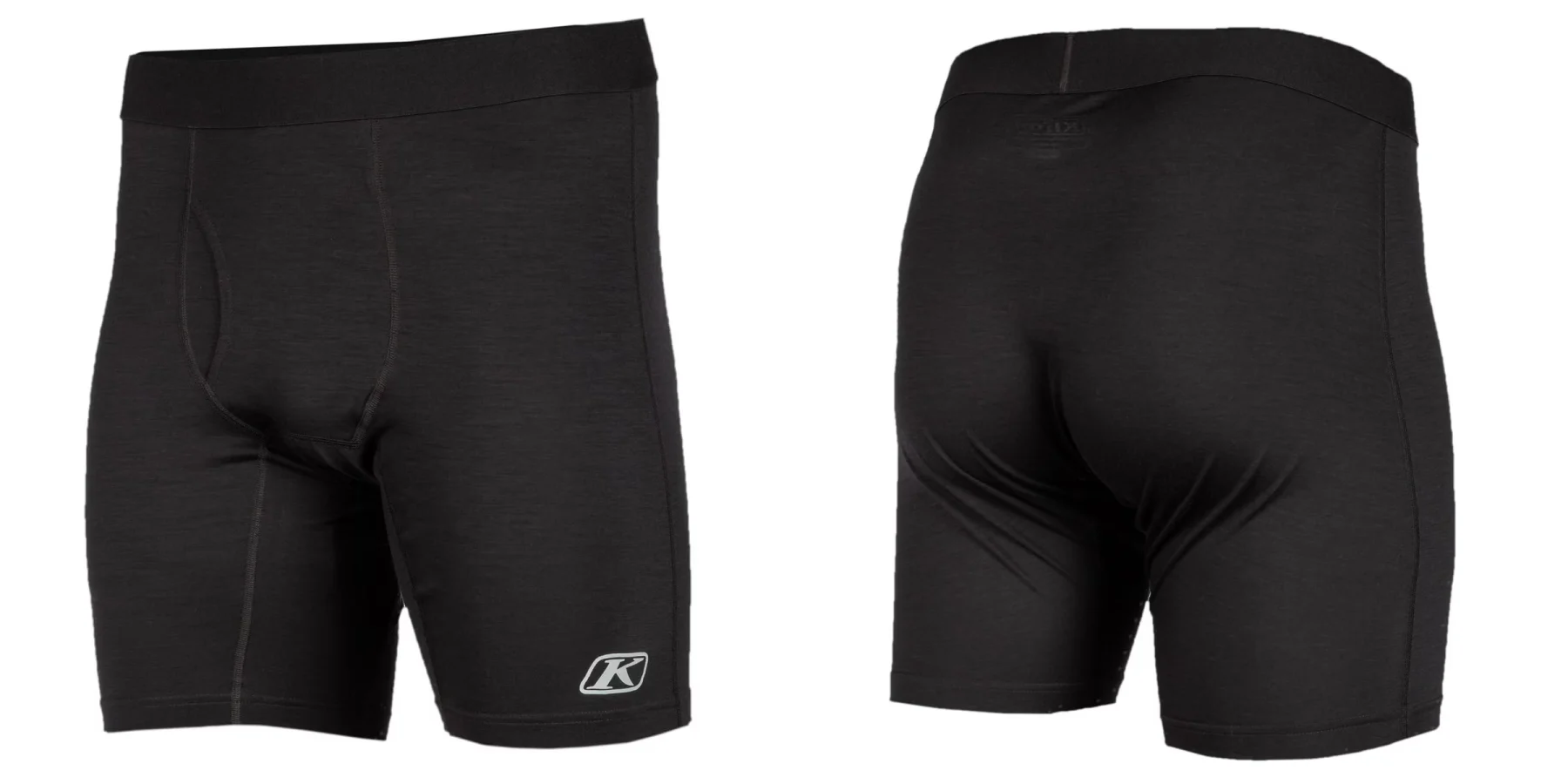
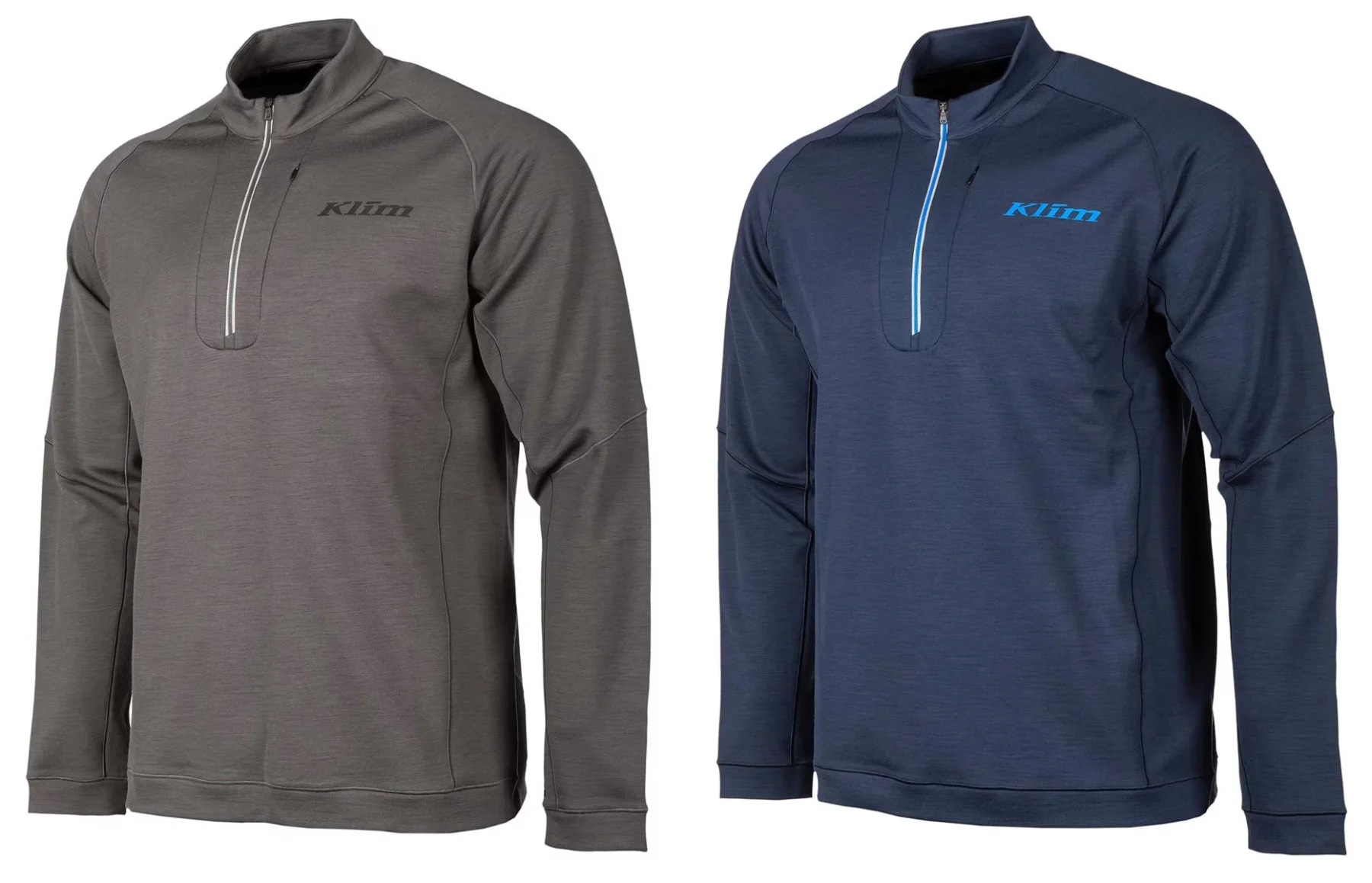
Beyond Insulation: Electrically Heated Garments
Electrically-heated garments are becoming increasingly popular thanks to the advent of USB-C rechargeable compact lightweight batteries. The battery-powered heating technology is now applied across a range of garments, from gloves to shirts, jackets, pants, and socks.

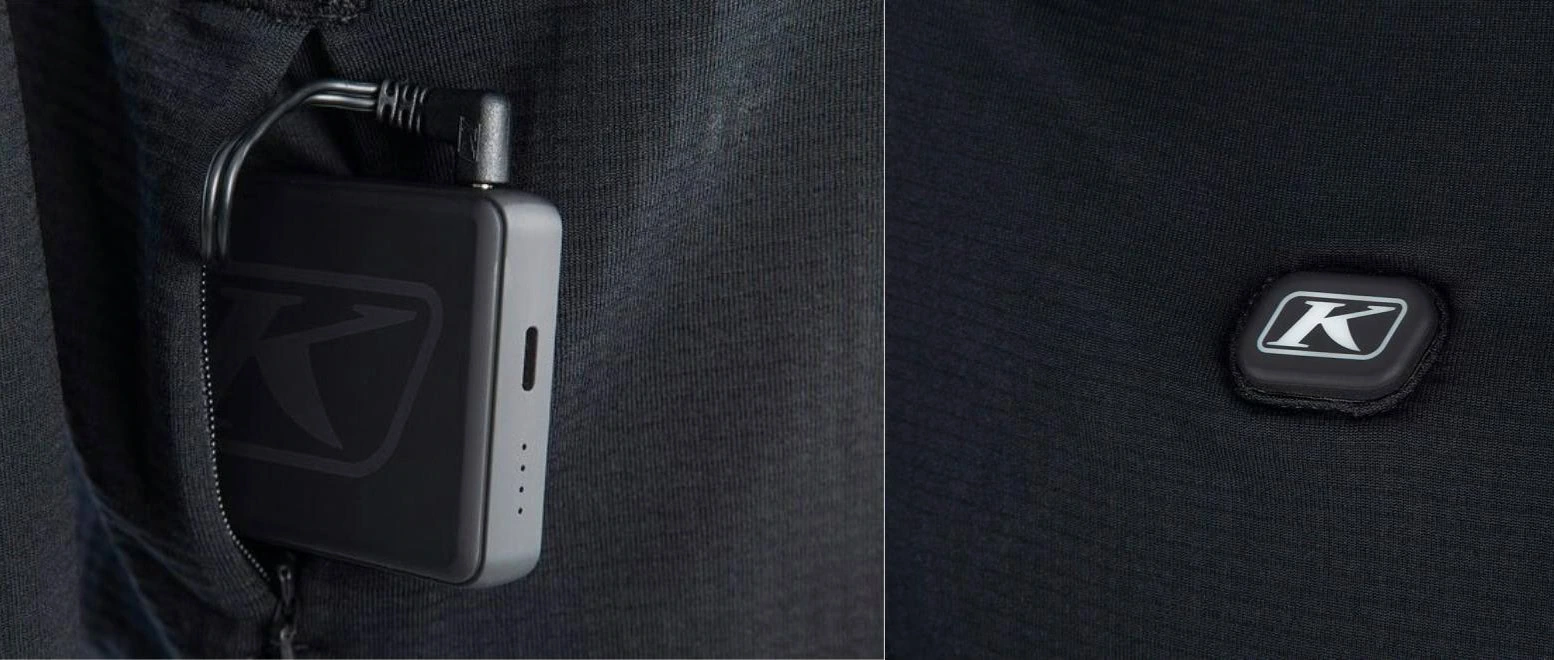
The Klim Aggressor eFire Heated Shirt is a battery-powered base layer that keeps your body warm through the use of heating filaments integrated in the fabric panels on the chest and upper back. The Klim Override eFire Vest is a technical mid-layer that combines 3M Thinsulate insulation with electric heating technology,

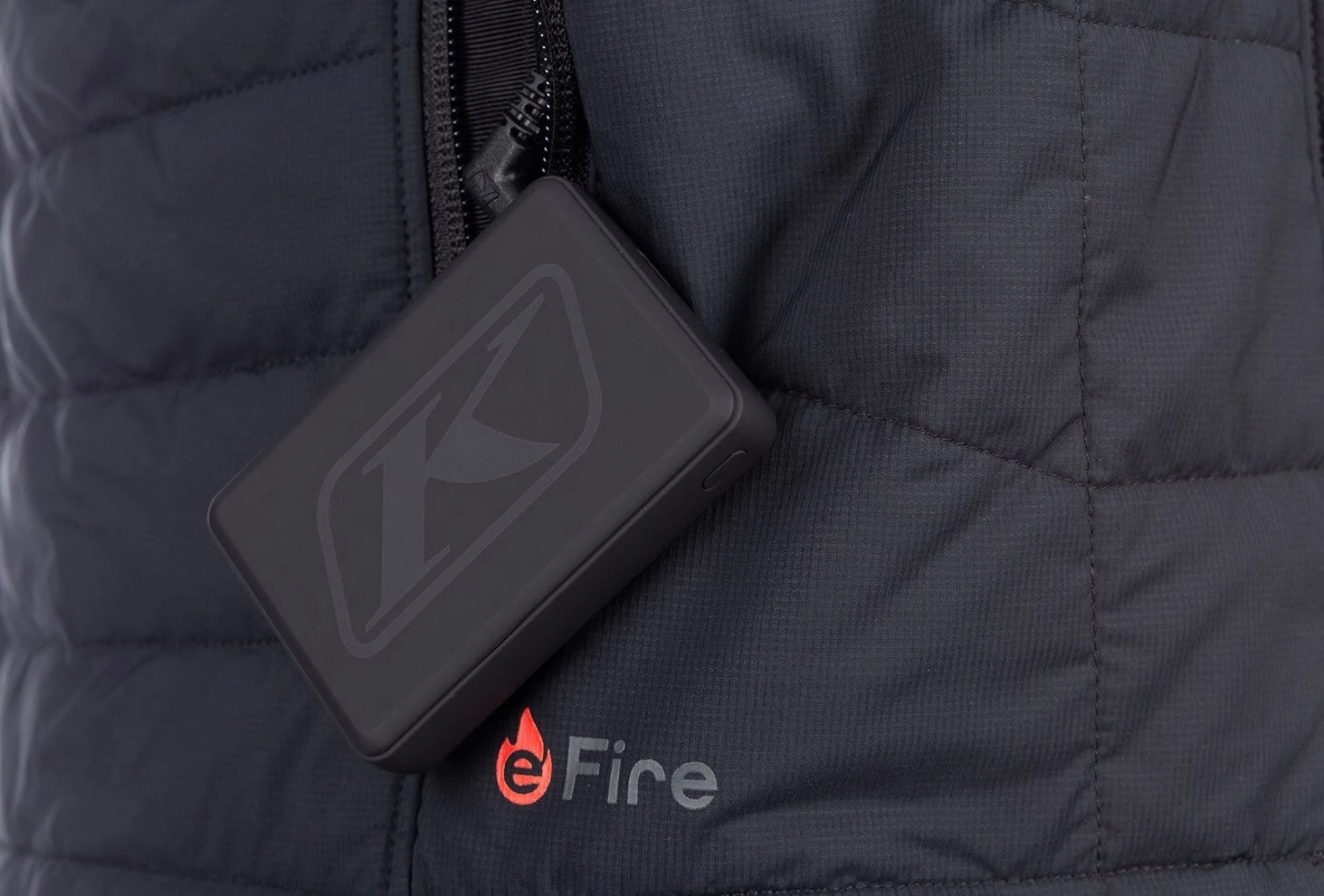
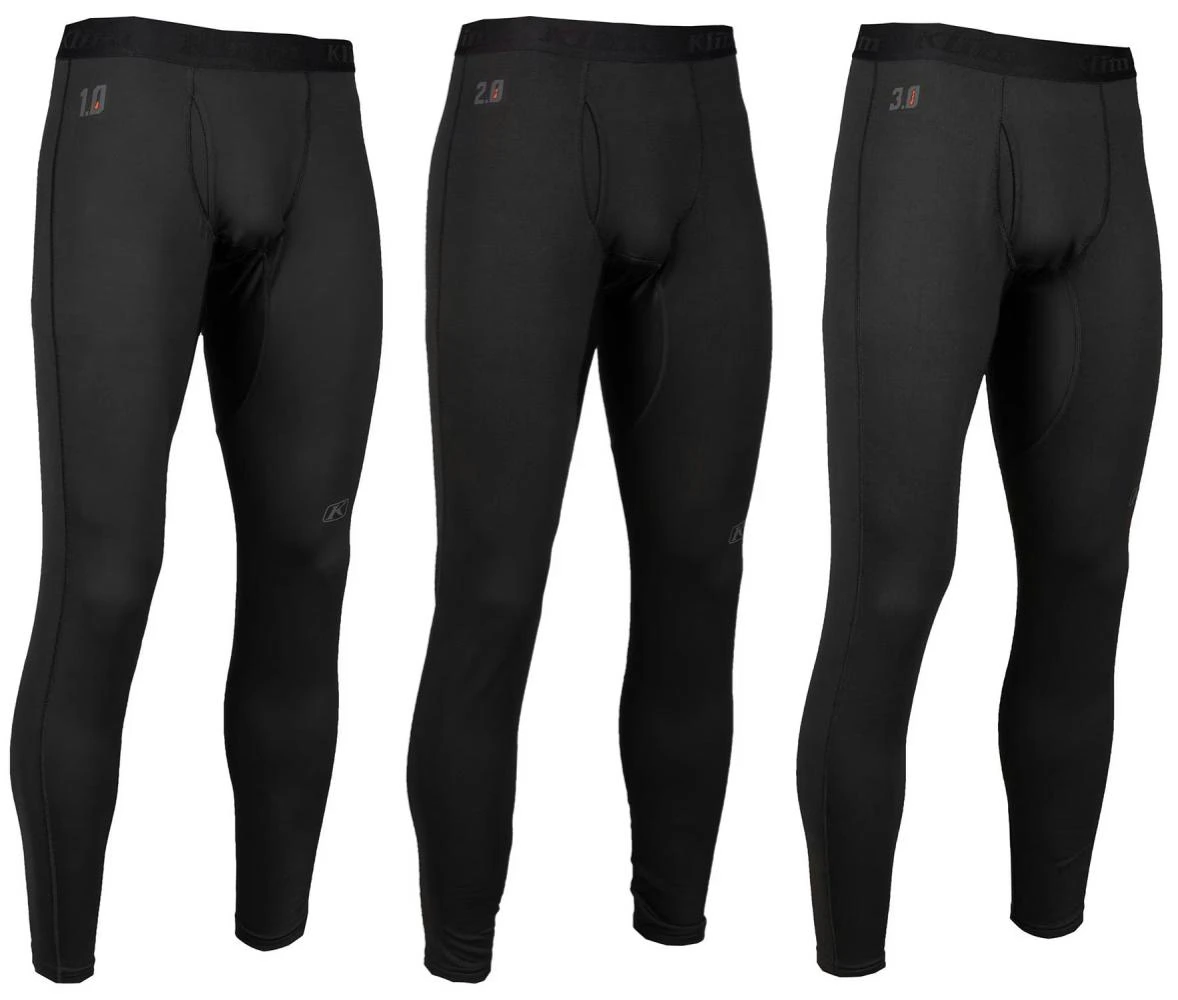
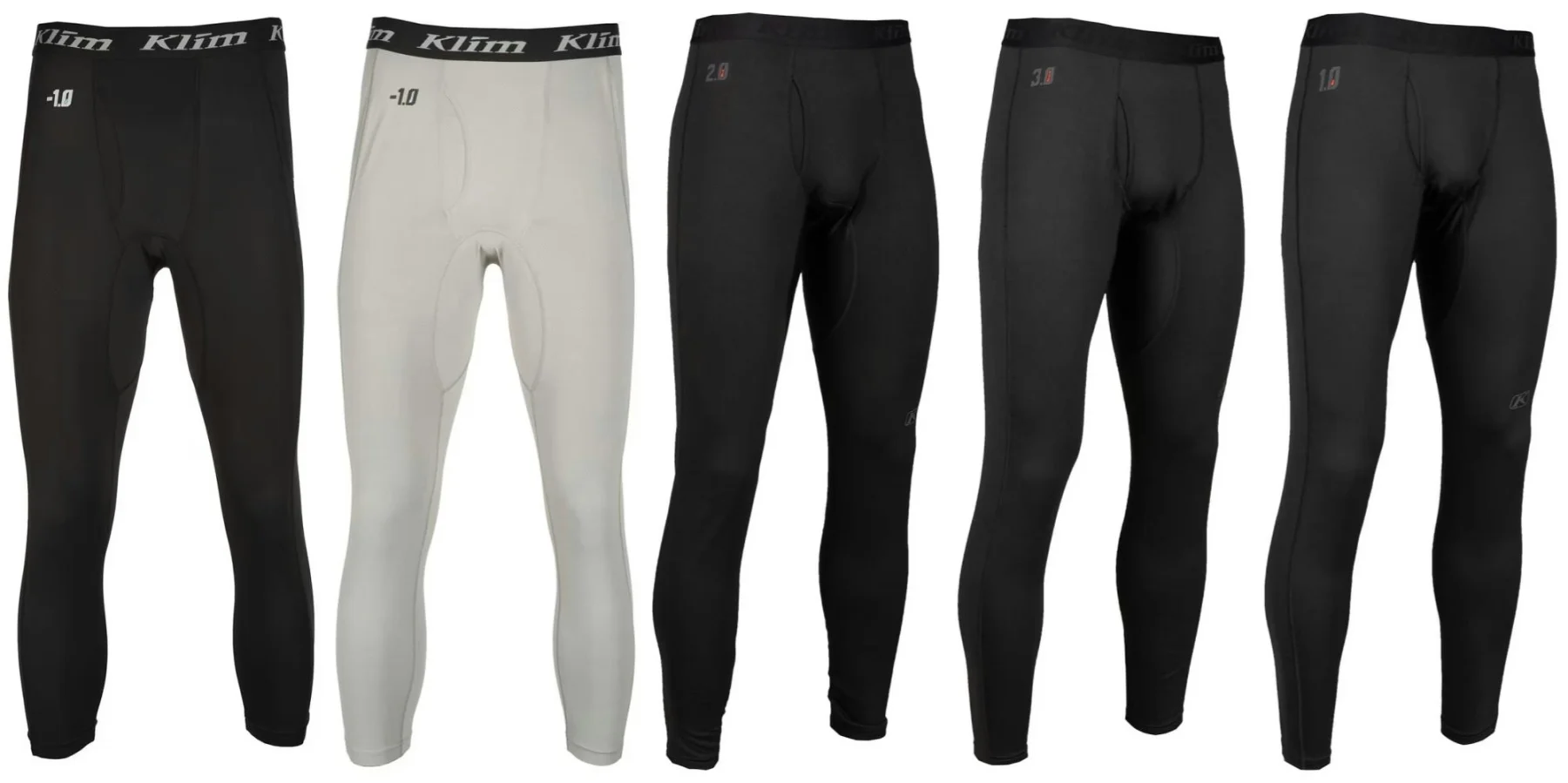
Technical Layering for the Heat
While dressing for the cold is a matter of layering up, intuitively you’ll want to shed layers to cope with the heat. Wearing as little as possible is the name of the game when it’s stinking hot, right? We want to maximize ventilation and evaporation. The less you wear, the greater the cooling effect from the riding wind. This is true, but only to a certain point, beyond which the heat is too high for the wind to have a cooling effect.
When you’re riding in temperatures beyond 105 °F (40 °C), you’re better off shielding your body from the hot wind as you risk heatstroke and excessive loss of sweat through evaporation.
In addition to ventilated or mesh base and mid-layers, advances in fabric technology have resulted in technical base layers that have active cooling properties.
KLIM’s second generation of Aggressor -1.0 Cooling Base Layers use chemical-free fabric technology for cooling, moisture-wicking and evaporation, making this material unlike other cooling and sweat-wicking fabrics on the market. The collection includes long sleeve and short sleeve shirts, pants, and briefs, all optimized for moisture-wicking, breathability, and cooling for motorcyclists and outdoor activities when it’s hot.
I admit that I was more than skeptical when I read the marketing pitch for Klim’s Aggressor -1.0 series of technical cooling garments. I was convinced that it was hyperbolic marketing speak from an overly enthusiastic advertising copywriter. Cooling garments made from chemically treated fabrics that induce a cooling effect become ineffective with use and washing over time. But here comes Klim asserting that their cooling garments don’t rely on a chemical substance but on a proprietary chemical-free cooling fabric technology that never loses its effectiveness.
Similar to my experience wearing Merino wool for the first time, I had another epiphany moment when I first wore the Klim Aggressor -1.0 Long Sleeve Shirt. If you haven’t experienced it, it’s hard to believe how well Klim’s chemical-free fabric technology works in terms of cooling, moisture-wicking and evaporation. Unlike other cooling and sweat-wicking fabrics on the market, Klim has come up with a unique moisture-wicking fabric that actively pulls sweat away from the skin, promoting rapid evaporation and a lasting cooling effect.
After almost two years of intensive use, this shirt’s cooling effect hasn’t worn off, as it’s just as noticeable as the first time. The Klim Aggressor -1.0 Cooling Garments deliver above and beyond what the sales pitch promises on Klim’s website. Ignore at your own risk, but if you want to beat the heat, trust me, the Aggressor -1.0 series are worth every penny.
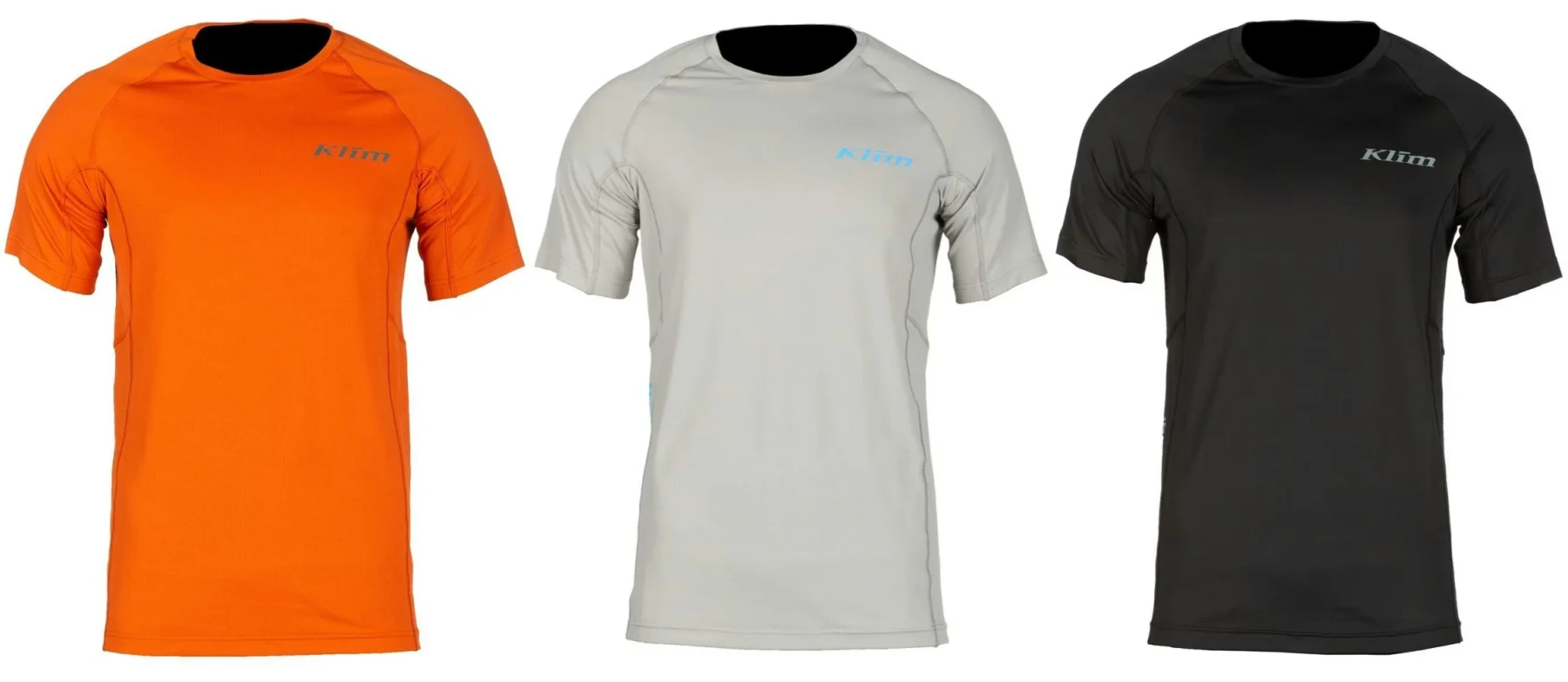
The Alpinestars Cooling Vest is an indispensable hot weather riding accessory that uses water to regulate the rider’s core temperature. Stretch elements in the vest ensure a good fit and full benefit from airflow and water cooling – even during the most strenuous off-road maneuvering. Easy to fill water port makes for quick, no-mess fill-ups and minimal downtime. Wide open-air perforations function as gussets to guarantee that the Alpinestars Cooling Vest always keeps its shape.
Features:
- Liquid cooling system that evenly releases cooling water droplets (mist) against the rider’s midsection
- Regulates vascular system and limits the effect of heat exhaustion
- Incorporated stretch inserts for fit and improved ventilation
- Designated air ports allow for airflow and breathability
- Lightweight with a refillable water chamber for easy continuous use
- Three-layer textile construction with moisture-wicking fleece lining
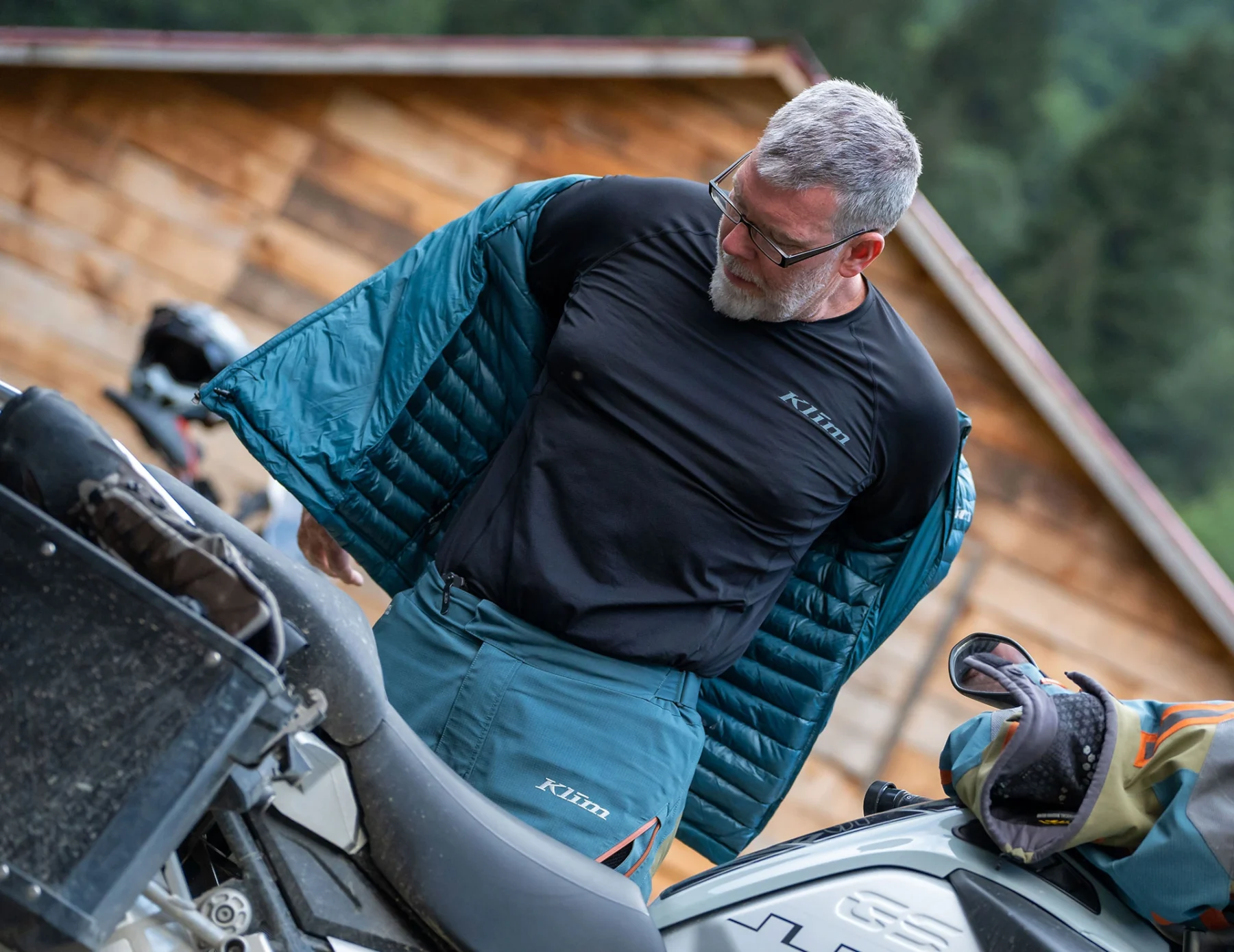
Merino Wool: A Wicking Good Fiber
Admittedly, I discovered the exceptional qualities of merino wool late in life. For decades, I shunned wool and only wore cotton or synthetic layers under my riding gear. Until a few years ago, wearing woolen clothing was unthinkable, due to being haunted by boyhood nightmares. I equated any kind of wool with the hateful itchiness of the coarse woolen sweaters my brothers and I had to wear because our mother lovingly knitted them for us. Little did I know that…
… not all woolen yarns are created equal.
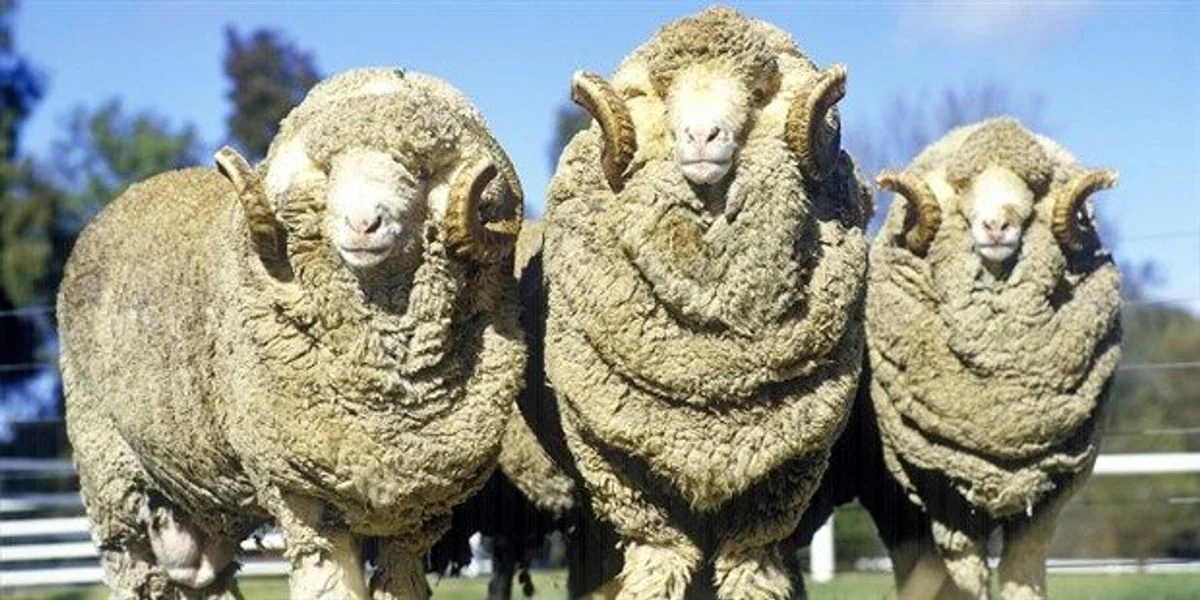
Boy, was I in for an eye-opener the first time I wore the Merino wool-based Klim Long-Sleeve Shirt, Pants, and Boxers in direct contact with my skin. I was shocked to discover how warm and silky soft these body-hugging undergarments felt. How did I miss out on this for all these years?
This begs the question: what makes merino wool so unique and special? If you’re interested in learning what makes this natural fiber stand out compared to other—coarser—wool varieties and synthetics, then read the following section. Otherwise, skip to the section on All You Need to Know about Puffer Jackets.
The Exceptional Qualities of Merino Wool
Of the more than 1,000 sheep breeds in the world, Merino sheep produce the finest fleece possessing many outstanding qualities that make it commercially the most valuable wool.

Qualities / Advantages:
- Softness: Merino wool is extremely soft, providing a luxurious itch-free feel against your skin. It’s not prickly like other, coarser wool varieties. Merino fibers are very thin and soft, so they bend out of the way when brushing up against your skin. The thickest merino wool fiber measures 23 – 24.5 microns, which is only ⅓ to ¼ of the diameter of a human hair (75 to 100 microns on average).
- Elasticity: Merino wool has exceptional elasticity thanks to its crimped, springy fibers offering excellent bounce in fabrics. Merino wool garments are flexible, stretchy, wrinkle-resistant, shrink-resistant, and retain their shape, even after long-term repeated use.
- Thermal insulation: One of the key reasons why merino wool fabric is highly regarded in the activewear/outdoor clothing industry is its exceptional insulation properties. Thanks to its natural loft, merino wool preserves body heat, trapping warm air between its crimped fibers. The wool’s coiled hair fibers also create microscopic pockets that trap warmth.
- Stays warm when wet: Merino wool is one of the rare fabrics that can generate heat while it dries. When it gets wet, water is trapped in the porous fibers. The hydrogen bonds in water break down inside the wool’s fibers, creating an exothermic chemical reaction that generates heat. Experiments have found that one kilogram of merino wool can produce as much heat over eight hours as an electric blanket.
- Breathability/Thermo-regulation: Since merino wool breathes very well, it helps regulate your body temperature. When it’s cold outside, its fibers’ natural coils, crimps, and curves trap air, insulating you. When it’s warm outside, it transports perspiration quickly away from the skin, preventing overheating and helping to keep you cool and dry. Its breathability and moisture-wicking ability are crucial to keeping your body at a stable temperature.
- Moisture-wicking: Merino wool keeps you dry and sweat-free. Merino wool pulls perspiration away from your skin as a vapor (pre-sweat). Merino fibers are inherently porous. They’re composed of tiny plates that moisture vapor can get in between and transport to the outer layers—preventing you from feeling wet, cold, and clammy.
Unlike synthetic fabrics, Merino wool has the remarkable ability to adsorb moisture without feeling wet, to a certain degree. It can adsorb up to 30% of its weight in moisture without feeling damp, keeping you dry even in humid conditions. Its limited capillary action doesn’t displace the air trapped in the micro air pockets in its coiled fibers.

In contrast, synthetic fabrics are not porous and wick sweat away as a liquid, not a vapor. Your body has to heat up the sweat/liquid to evaporate it—making you feel clammy in colder weather. Merino takes the sweat evaporation step out of the process, helping you stay warm and dry.
- Good For Layering: The colder it gets, the more you’ll need to layer to boost insulation.
The advantages of multiple layers are threefold:
- Firstly, in contrast to one thick layer, multiple layers offer adjustability. Adding or removing layers allows you to manage the level of thermal insulation necessary to preserve or shed heat and hence regulate your body temperature.
- Secondly, multiple layers create a more effective thermal insulation barrier. Air gets trapped between the layers and within the merino fabric of each layer.
- Thirdly, more effective wicking: if all layers are merino wool, they wick perspiration away from the skin to the outside of your gear as vapor instead of liquid—helping to keep you warm and dry. Adding a synthetic layer into the mix would throw up a barrier to the sweat-vapor escape route, causing you to get cold and clammy.
- Odor resistance: Compared to synthetic garments that stink unbearably by the end of the day, merino wool absorbs odor caused by bacteria—trapping their smell and keeping them from building up, even after prolonged use, thanks to its wax coating.
- Antimicrobial and antifungal properties of Lanolin, merino wool’s natural wax coating, prevent the growth of bacteria that cause bad smells, making it great for multi-day use without washing.
Lanolin is a natural wax that coats the wool of merino sheep and provides multiple benefits, including:
- Waterproofing: Lanolin helps repel water and protects the sheep’s skin from harsh climates.
- Antibacterial: Lanolin prevents bacteria from forming, even in wet environments.
- Odor resistance: Merino wool’s natural lanolin repels odor-causing bacteria.
- Softness: Lanolin helps keep the wool soft.
- Elasticity: Lanolin helps merino wool stay elastic.
- Mold and mildew resistance: Lanolin helps Merino wool resist mold, bacteria, and mildew.
- UV protection: Merino wool offers natural protection against the sun’s harmful UV radiation as its fibers have a built-in UV absorption capability.
- Flame-retardant/Self-extinguishing: If you occasionally sit around a campfire, it’s reassuring that Merino won’t burn or melt like nylon or polyester when sparks or hot ashes land on you.
- Sustainability: Merino wool is a 100% natural fiber, making it an environmentally friendly, renewable, and 100% biodegradable material. Merino wool disappears after about 12 months in or on the ground, disintegrating its fibrous protein and releasing carbon and nutrients into the soil.
- Anti-static: Since Merino wool absorbs moisture, it’s less likely to cling to the body and cause static electricity.
- Hypoallergenic
- Lightweight
- Mothproof

Disadvantages
- Merino wool is significantly more expensive than synthetic materials.
- Merino wool is less resistant to wear and tear than synthetic materials.
To improve durability, manufacturers produce fabric blends combining merino and synthetics, merging their qualities while offsetting their disadvantages.
Klim Teton Merino Wool apparel is made from a blended technical fabric comprising 80% merino wool and 20% nylon, making it more durable than pure merino.
Taking Care of Merino Wool
Merino wool will last longer and retain its outstanding qualities and performance if you respect the following instructions when washing:
- Turn the clothes inside out
- Use the most gentle wash cycle
- Use a maximum temperature of 86˚F/30°C
- Select a low spin speed (600 – 800 rpm)
- Don’t use fabric softener, bleach, or bio-washing powder
- Don’t put the clothes in the dryer
- Ideally, dry the garment in a horizontal position
All You Need to Know about Puffer Jackets
Puffer jackets are the warmest mid-layer options, outperforming wool or polar fleece. They keep you warm the same way goose down keeps geese warm, by trapping pockets of warm air close to the skin, keeping warm air in and cold air out. They are stuffed with natural or synthetic down that mimics natural down or a combination.
Despite the growing popularity of synthetic insulation materials, duck or goose down remains the warmest, lightest, and most compressible filling for puffer jackets. This is surprising given synthetic materials have made tremendous technological progress while down hasn’t changed since the first down jacket was sold in 1936.
Natural Down vs Synthetic Insulation
The first distinction we must make is between puffer jackets filled with synthetic insulation and natural down. Both have their pros and cons.
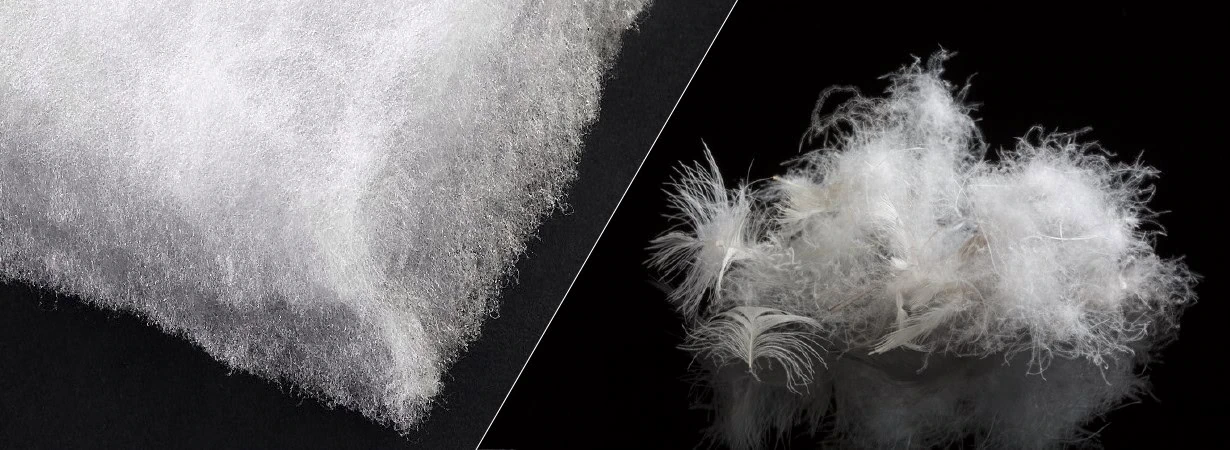
Although many outdoor/activewear brands praise the qualities of synthetic insulation, goose or duck down still outperforms it in cold, dry conditions. Down is ultralight, ultrawarm, and ultracompressible.
Down is lighter, less bulky, packs smaller, and weight-for-weight it’s warmer than synthetic insulation.
But down’s major weakness is that it fails to insulate when wet and dries slowly. In contrast, synthetic insulation maintains its insulating power in damp conditions. Down is also a lot more expensive than synthetic insulation.
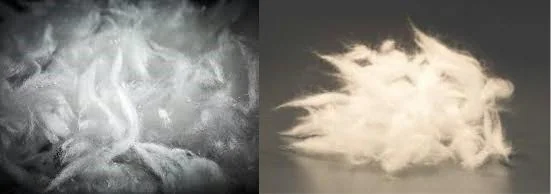
Down’s artificial alternative is a synthetic filling designed to mimic the softness and insulating properties of natural down. Typically made from materials like polyester microfibers, the synthetic alternative is hypoallergenic, making it an excellent choice for those with allergies.
Synthetic fills have no equivalent test to the down-fill power rating system, and each brand of synthetic insulation has unique characteristics. So, it’s impossible to compare insulation efficiency of natural down to any synthetic fill or between two different synthetic fills.
| Comparison of Down vs Synthetic | |
| Pros of Down | Cons of Down |
| – Higher warmth-to-weight ratio than synthetic insulation- Ultra compressible (packs much smaller)- Ultralight (lighter than synthetic)- Very durable; with proper care, a quality down jacket can last for decades | – Loses insulating power when it gets wet- Takes a long time to dry- Cleaning down requires special care- Not hypoallergenic (rarely an issue)- More expensive than synthetics |
Comparison of Pros and Cons of Down vs Synthetic Insulation
The most common criticism of down insulation is its tendency to clump up and lose loft when it gets wet, thereby losing its insulation properties.
Proprietary technologies have been developed over the years to treat down at a microscopic level with a water-resistant application. This treatment allows goose down to resist light moisture without compromising its loft. I walked in drizzling rain on several occasions with my Klim Maverick Down Jacket without the down getting wet. This said, it benefits from a water-repellent outer shell fabric.
However, if submerged in water or exposed to heavy rain, even treated down will get wet, so it’s imperative to keep your down-filled puffer jacket dry.
Down vs Feathers
Nature’s best insulator, down is the light, airy, soft undercoating found under the visible feathers of waterfowl such as ducks and geese. Down consists of spherical clusters of fluffy, wispy filaments growing from an undetectable central quill point, similar to a dandelion pod. In contrast, feathers have a long hard quil from which two rows of close-knit fibers sprout.

Down is prized for being light, easy to compress, resilient, long-lasting, breathable, and above all, insulating better than any man-made material. It’s the insulation of choice in cold, dry conditions, or when reducing weight and saving space are top priorities. These qualities are high on the specs wish list of ADV riders.
Feathers are the plumage, or outer growth, of birds. Feathers trap much less air than down as they don’t loft and are not spherical.
Feathers consist of a hollow quill shaft (or stem) with a series of fibers extending from each side. The pointy end of a feather’s stiff quill shaft makes it prickly, and thus less desirable for garments worn close to the skin.

Why Mix Feathers with Down?
Manufacturers often blend down and feathers, indicated by a percentage ratio of down to feathers. For example, the Klim Maverick Down Jacket contains 90/10 goose down, meaning 90% down and 10% feathers. But if down offers superior insulation and softness, why not opt for 100% down filling instead of mixing feathers into the blend?
Feathers in goose-down puffer jackets serve several key purposes:
- Loft and Insulation: While down itself provides excellent insulation, feathers play a crucial role in maintaining the loft or volume of the jacket. Feathers help to create structural air pockets within the down cluster, which trap warm air and prevent cold air from penetrating. This enhances the jacket’s overall insulation properties.
- Durability and Structure: Feathers provide structural support to the down cluster, preventing it from clumping together and losing its insulating efficiency. This helps to maintain the jacket’s lofty shape and durability over time.
- Cost Reduction: Feathers are generally less expensive than pure down, so adding them to the filling can help reduce the overall cost of the jacket without significantly compromising its insulating properties.
The 90/10 blend is the ‘golden ratio’ for high-quality goose-down puffer jackets. This means 90% of the filling is down and 10% is feathers. This ratio offers a good balance between insulation, durability, and cost. Adding more feathers would lower the production cost, but would also reduce insulation and warmth. Fewer or no feathers would affect the loft and durability.
Ultimately, the ideal ratio depends on the specific needs and preferences of the manufacturer and the target market. The 90/10 blend is a common ratio for top-quality goose-down puffer jackets of high-end brands.
What is Fill Power and why is it important?
Down Fill Power is a measure of the loft of down and indicates its quality and warmth or insulating power. It’s the volume in cubic inches that one ounce of down takes up; higher quality down lofts to a higher volume.
The rating scale ranges from 300 to 900 or higher, with most common down products having a rating of 400 to 500.

It’s measured in a lab by compressing one ounce of down in a glass cylinder. The down’s “loft” indicates its resilience or ability to bounce back after being compressed for 60 seconds. The fill power indicates how much air the lofted down can trap.
YouTube: How fill power is measured
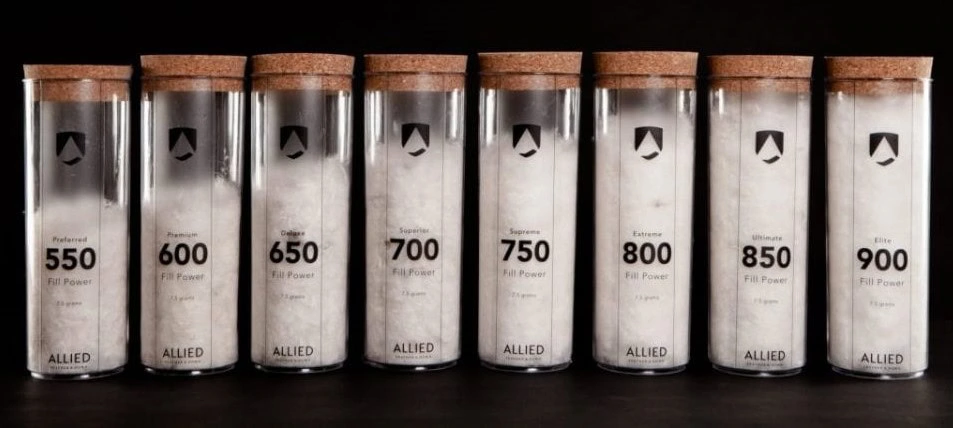
The fill power scale typically ranges from 300 to 900, with higher fill power indicating better quality down, more loft, more air trapped, and thus warmer. The higher loft also means the down is more resilient and thus lasts longer.
| Down Fill Power Rating Scale | ||
| Fill Power Rating | Down Quality | Description |
| 300–400 | Low quality | Smallest down clusters, risk bunching up over time, often duck down, cheapest, low insulation efficiency |
| 400–500 | Medium quality | The most common (duck) down, budget-friendly |
| 550–650 | Good quality | Popular choice, good performance/quality/price ratio |
| 700–750 | Very good quality | |
| 800–850 | Premium quality | Premium price, high-end activewear/outdoor brands |
| 900–1000 | Highest quality | Exclusive top-class down, very expensive, usually reserved for extreme mountaineering and arctic expedition gear |
Fill Power vs Fill Weight
Although fill power indicates the quality of the down filling, it’s not the only factor determining how well a down jacket protects you against the cold.
Higher fill power numbers indicate greater loft and insulating efficiency. But that down fill power does not tell you how warm a jacket will be because other factors affect warmth.
The Fill Weight, or how much down is used to fill the puffer jacket also affects how warm it’ll keep you.
Premium goose down can reach fill-power ratings of 900 to 1000, while duck down can achieve fill-power ratings of maximum 750 or 800.
Comparing puffer jackets is not an easy task, because very few brands report the jacket’s fill weight, which affects insulation and warmth as much as fill power.
In theory, a puffer jacket filled with 100 g of 800-fill-power down would offer the same warmth as one with 200 g of 400-fill-power down; it would also compress to about half the space.
| Comparison of equally warm puffer jackets | Premium Quality Down | Low/Medium Quality Down |
| Fill Power Rating | 800 | 400 |
| Fill Weight | 100 g | 200 g |
| Insulation/Warmth | Same | Same |
| Packability/Compressibility | Ultra-compressible | Twice the compressed volume |
| Weight | Ultra light | Twice as heavy |
| Cost | Expensive (multiple) | Low |
But any simple formula for warmth calculation won’t account for differences in how the down is distributed within baffles and around the jacket.
Baffle Box vs Sewn-Through
Another factor influencing the warmth of a puffer jacket is the construction method, namely if the down is contained in baffle boxes or sewn-through pockets.

The Baffle Box construction is warmer than sewn-through construction.
The internal 3-dimensional compartments created by baffle box construction allow for a larger volume, more even fill distribution, and greater loft, resulting in better insulation and greater warmth.
The extra stability of the baffle box design reduces wear and tear on the stitching and loss of down, increasing the jacket’s durability and lifespan.
The three-dimensional structure of the baffle box with individual chambers helps to keep the filling evenly distributed. It also makes for a flatter surface and allows the fill to loft fully at the edges of its chamber, reducing cold spots.
The disadvantage of the baffle box design is that it is more expensive: it requires more labor and materials, making it a high-quality construction method with a higher price tag.

The Sewn-Through Box construction stitches the jacket’s lining and outer shell together, reducing the 2-dimensional box volume available for holding the down filling. This results in a lower fill weight and thus less insulation and warmth.
In addition to the smaller boxes, the sewn-through construction creates a ‘cold bridge’ at the stitching, causing heat loss. The stitching holes also offer an escape path for the down and feathers, resulting in the jacket shedding its insulation over time. The sewn-through stitching imposes more wear and tear on the thread and fabric.
My old down jacket was of the sewn-through type, and from day one, it shed its feathers through the stitching holes at an alarming rate. Over the years, I left a trail of tiny feathers and down tufts across various continents.
The sewn-through construction allows for a budget-friendly puffer jacket as its production requires less labor and less material. Another advantage is that the down won’t shift as easily as the compartment is smaller than a baffle box.
Goose Down vs Duck Down
Down insulation has typically been sourced from geese. But the increasing demand has driven up the price of goose down. Compared to geese, the duck farming industry and market is much bigger and duck down production is therefore much larger and cheaper than goose down. As a result, many manufacturers of down apparel switched to duck down in recent years .
Its lower cost is duck down’s only advantage, as its performance is inferior to goose down. Geese are bigger birds and their down tufts are much larger than duck down. Even for tufts of the same size, the insulation power of goose down is 15% higher than that of duck down.
The fill power rating scale also illustrates the superiority of goose down. Duck down fill power ratings are in the 300-400.
Premium goose down can reach a fill power rating of up to 1000, while duck down can achieve a maximum of 750 or 800.
The advantage of goose down’s higher fill power is that it requires less down to fill space and achieve the same insulation or warmth as a jacket with duck down filling (assuming the fabrics and other features are comparable in weight, construction, and quality).
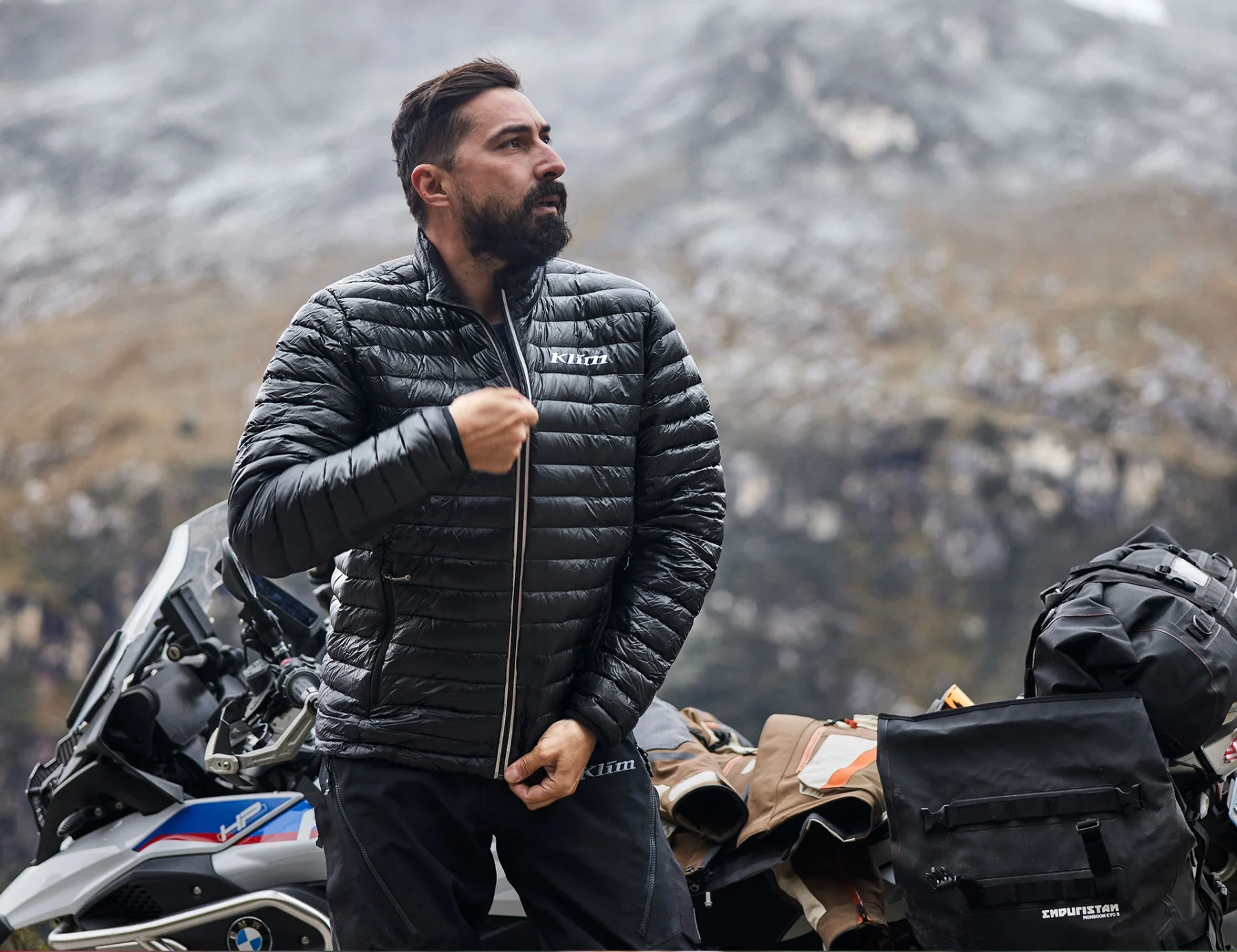
Premium fill-power goose down commands a premium price. It’s used to keep puffer jackets ultralight, ultrapackable, and ultra-insulated. So if you’re trying to save weight and space in your motorcycle luggage system or you want a stylish warm winter jacket that is guaranteed to keep you warm, an 800-fill-power puffer jacket like the Klim Maverick is your best bet.
Synthetic Insulation Materials
Several alternatives and brand names exist for synthetic insulation fabrics that offer similar performance to Merino wool blends. These proprietary synthetic materials are popular for their lightweight, breathable, and insulating properties. They stand out for their fast moisture-wicking and quick-drying performance.
These synthetic alternatives offer varying levels of warmth, breathability, water resistance, and compressibility. Following you’ll find a list of synthetic insulation brands and technologies used in outdoor and motorcycle gear:
1. PrimaLoft
- Overview: PrimaLoft is a synthetic microfiber thermal insulation material developed as an alternative to goose down. Created for the U.S. military in the 1980s, PrimaLoft offers high warmth-to-weight performance and retains heat even when wet. It’s one of the most popular synthetic insulations for outdoor and performance gear, known for balancing warmth, compressibility, and water resistance.
- Key Features:
- Lightweight with excellent thermal efficiency
- Maintains warmth even when wet
- Highly compressible, easy to pack into small spaces
- Soft and comfortable feel, similar to natural down
- Available in multiple versions for different applications (PrimaLoft Gold, Silver, Black)
- Made from recycled materials in some versions (Eco-friendly options)
- Used in:
- High-performance motorcycle and outdoor gear (jackets, gloves, sleeping bags)
- Mid-layers and outerwear for activities like skiing, hiking, and motorcycling
- Cold-weather (motorcycle) gloves and footwear
- Insulated liners in (motorcycle) jackets and pants
2. Thinsulate
- Overview: Developed by 3M, Thinsulate is a thin and lightweight synthetic insulation known for its superior ability to trap heat without adding bulk. The name comes from “thin” and “insulate,” and it lives up to its name by offering warmth in a thin profile. It’s commonly used in a wide range of applications, from casual apparel to outdoor performance gear.
- Key Features:
- Very thin, lightweight insulation with a high warmth-to-weight ratio
- Traps air molecules between fibers for effective insulation
- Available in multiple thicknesses and insulation grades
- Maintains insulation properties even in damp conditions
- Breathable and moisture-wicking
- Often used in combination with other insulation layers for extreme cold-weather gear
- Used in:
- Motorcycle gloves, winter gloves, hats, and boots
- Motorcycle mid-layers, lightweight insulated jackets and pants
- Outdoor sports gear (skiing, snowboarding, hiking)
- Workwear for cold environments
- Automotive applications (insulated car seats and interiors)
3. Polartec Alpha
- Overview: Originally developed for U.S. Special Forces, Polartec Alpha is known for its active insulation properties, which allow for better breathability while providing warmth.
- Key Features: Breathable, quick-drying, designed for dynamic activities where fluctuating temperatures are common.
- Used in: Outdoor gear, jackets, and mid-layers.
PrimaLoft, Thinsulate, and Polartec Alpha are the most popular choices for synthetic insulation in motorcycle apparel applications. Valued for their warmth, lightweight performance, and moisture resistance, they are ideal for a wide variety of outdoor and cold-weather applications, including motorcycling.
If you’re looking for non-motorcycle brand alternatives, brands like Climashield, Coreloft, and Thermore offer comparable options. Each has its own strengths depending on the activity, climate, and gear requirements, and all can provide warmth, durability, and weather resistance without the bulk of traditional insulation. For motorcyclists, particularly, having flexible, lightweight, and weather-resistant insulation is key to comfort on long rides through varying conditions.
4. Climashield
- Overview: A continuous filament synthetic insulation, known for its durability and ability to retain loft even after repeated compression.
- Key Features: Highly compressible, durable, retains warmth even when wet, often used in military gear and outdoor applications.
- Used in: Sleeping bags, outdoor clothing, and some motorcycle gear.
5. Coreloft by Arc’teryx
- Overview: Developed by Arc’teryx, Coreloft is a proprietary insulation used in their jackets and other outerwear.
- Key Features: Highly compressible, low bulk, and provides efficient warmth.
- Used in: Arc’teryx gear, primarily in their insulated jackets and mid-layers.
6. Thermore
- Overview: An Italian company that produces high-performance thermal insulation for outdoor, active, and fashion apparel.
- Key Features: Lightweight, excellent thermal retention, and available in various versions, including EcoDown (recycled materials) and Freedom (stretch insulation).
- Used in: Fashion and outdoor brands, jackets, and activewear.
7. Thermolite
- Overview: A synthetic insulation technology known for lightweight warmth. Thermolite is designed to trap body heat and keep the user warm without adding excessive bulk.
- Key Features: Lightweight, moisture-wicking, highly breathable.
- Used in: Outdoor apparel, gloves, and mid-layers.
8. Apex by Polartec
- Overview: Apex is another synthetic insulation from Polartec designed for warmth, breathability, and lightweight performance.
- Key Features: Provides excellent thermal regulation and moisture-wicking properties.
- Used in: Mid-layers, outerwear, and activewear.
9. 3M Featherless Insulation
- Overview: Synthetic insulation designed to mimic the warmth and loft of down but with the added benefit of staying warm even when wet.
- Key Features: Water-resistant, retains warmth when damp, offers a down-like feel and compressibility.
- Used in: Jackets, sleeping bags, gloves.
10. G-Loft
- Overview: G-Loft is a synthetic insulation developed in Austria, known for its ability to combine the advantages of down and synthetic fibers.
- Key Features: High warmth-to-weight ratio, retains insulation when wet, quick drying, and durable.
- Used in: High-performance outdoor gear and tactical clothing.
11. Heatseeker by The North Face
- Overview: A proprietary synthetic insulation developed by The North Face for use in their outerwear and accessories.
- Key Features: Highly durable, retains warmth when wet, and compresses easily.
- Used in: The North Face jackets, sleeping bags, and gloves.
12. Loftech by Mountain Equipment
- Overview: A synthetic insulation developed by Mountain Equipment to mimic down’s warmth and compressibility, while maintaining its ability to stay warm when wet.
- Key Features: Highly compressible, lightweight, down-like performance.
- Used in: Mountain Equipment’s insulated jackets and sleeping bags.
13. FX Down by Montbell
- Overview: A synthetic alternative to down that provides great insulation while staying light and compressible.
- Key Features: Warmth similar to down, dries quickly, and retains insulating properties when wet.
- Used in: Montbell outdoor gear, especially jackets.
14. HyperDRY by Allied Feather & Down
- Overview: While this isn’t a synthetic insulation, it’s a water-resistant down that behaves similarly to synthetic fibers when wet, offering a combination of down’s warmth and water resistance.
- Key Features: Lightweight, water-resistant, retains loft even in damp conditions.
- Used in: High-end down jackets and sleeping bags.
Summary
All the aforementioned synthetic insulation materials are alternatives to Merino wool blends used by motorcycle gear brands like Klim and Mosko Moto for their thermal base and mid-layers. PrimaLoft, Polartec Alpha, and Thinsulate are popular synthetic insulation brands in the motorcycle gear industry, but the other outdoor gear brands offer comparable options.
Each brand has its own strengths depending on the activity, climate, and gear requirements, and all can provide warmth, durability, and weather resistance without the bulk of traditional insulation. For motorcyclists, particularly, having flexible, lightweight, packability and weather-resistant insulation is key to comfort on long rides through varying conditions.
Related
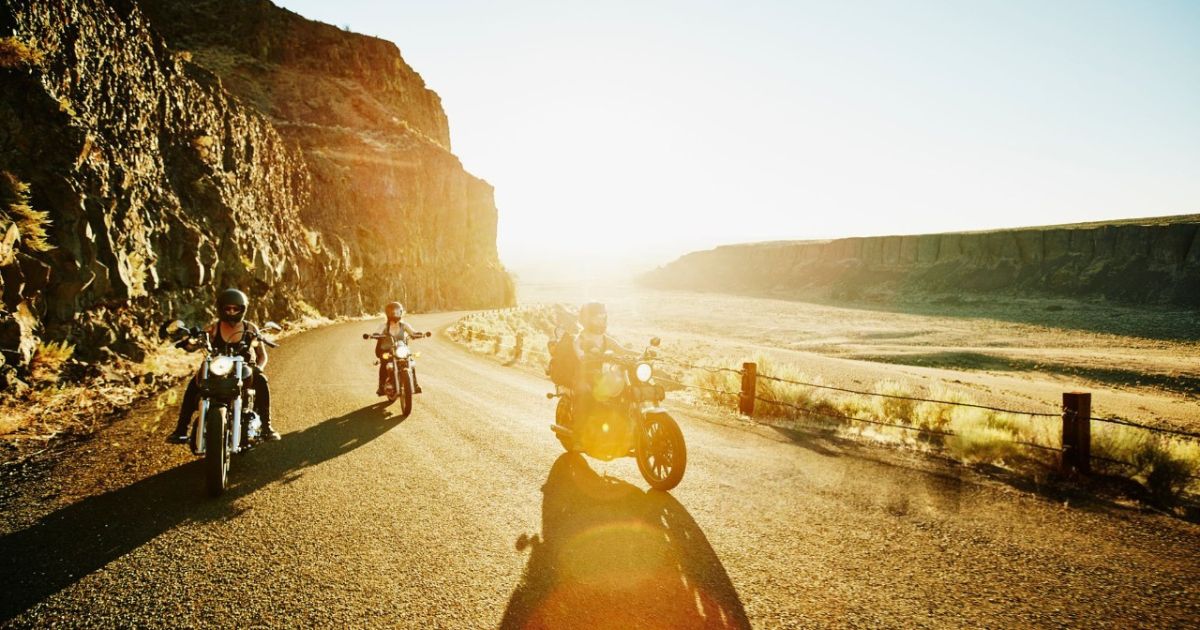
Cool Comfort & Protection: Mesh Motorcycle Pants for Riders
Stay cool and protected this summer with the best mesh motorcycle pants for every riding style—from commuters to ADV explorers—all tested and rider-approved.

